Consider perennial ornamental grasses if you are looking for a low-maintenance addition to your garden. They will not only add beauty to your landscape, but they will also help in privacy, prevent erosion, and provide a reliable source of food and shelter for birds.
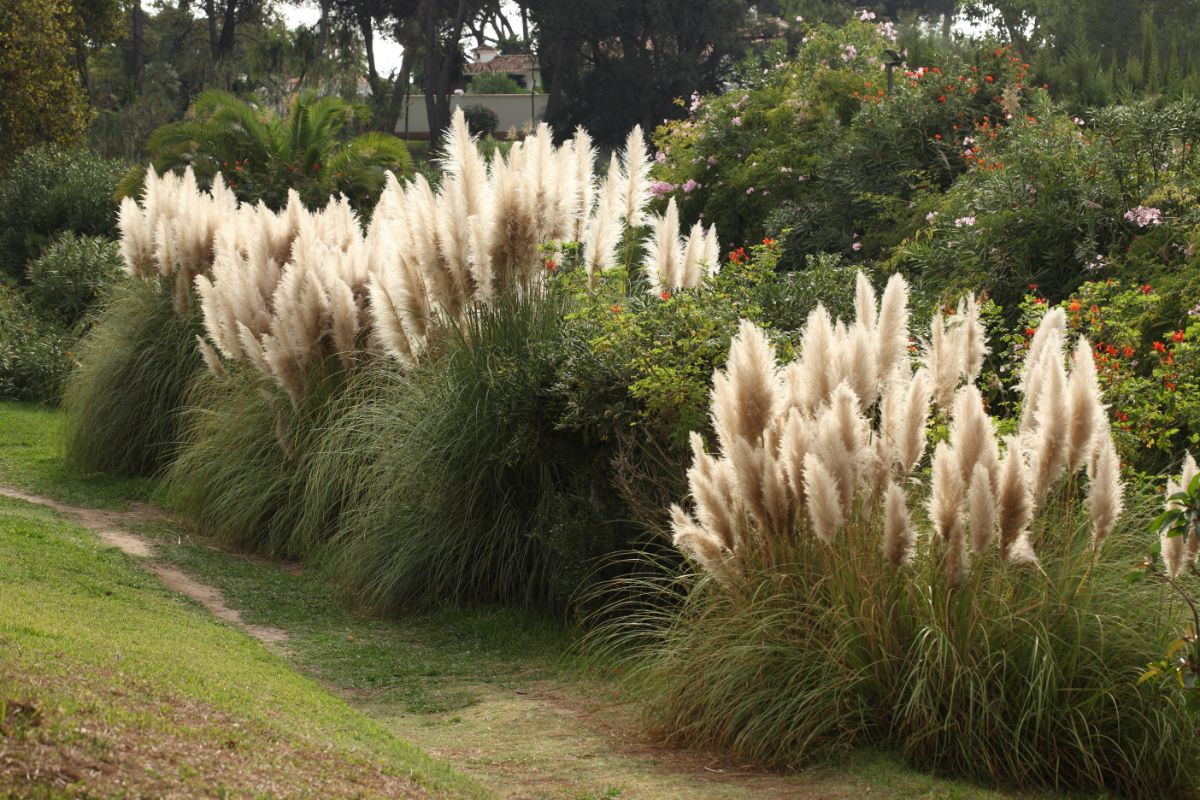
As a seasoned gardener, you would agree that no plant has the versatility that ornamental grasses possess and its impact on any garden bed or container is unmatched.
There are plenty of perennial ornamental grass varieties that you can use to beautify your garden, including pampas grass, feather reed grass, blue fescue, fountain grass, pink muhly grass, etc.
Let’s quickly learn more about these stunning plants!
Jump to:
- What are Perennial Ornamental Grasses?
- Perennial Ornamental Grass Varieties
- 1. Pampas Grass
- 2. Feather Reed Grass (Calamagrostis 'Karl Foerster')
- 3. Blue Fescue (Festuca glauca)
- 4. Fountain Grass (Pennisetum alopecuroides)
- 5. Pink Muhly Grass
- 6. Monkey Grass or Lilyturf (Liriope specie)
- 7. Little Bluestem (Schizachyrium scoparium)
- 8. Switch Grass (Panicum virgatum)
- 9. Maiden Grass (Miscanthus Sinensis)
- 10. Purple Fountain Grass (Pennisetum setaceum 'Purpureum')
- 11. Blue Oat Grass (Helictotrichon sempervirens)
- 12. Purple Millet (Pennisetum glaucum)
- 13. Fiber Optic Grass (Isolepis cernua)
- 14. Cord Grass (Spartina pectinata)
- 15. Japanese Forest Grass (Hakonechloa macra' Aureola')
- 16. Ravenna Grass (Saccharum ravennae)
- 17. Mondo Grass
- 18. Hair Grass (Deschampsia cespitosa)
- 19. Woodrats (Northern Sea Oats)
- 20. Purple Moor Grass (Molinia caerulea)
- 21. Sedge
- 22. Zebra Grass (Miscanthus Sinensis 'Strictus')
- 23. Dwarf Pampas Grass (Cortaderia selloana ‘Pumila’)
- 24. Big Bluestem (Andropogon gerardii)
- 25. Mexican Feather Grass (Nassella tenuissima)
- Growing Tips for Perennial Ornamental Grass Varieties
- Frequently Asked Questions
- Conclusion
What are Perennial Ornamental Grasses?
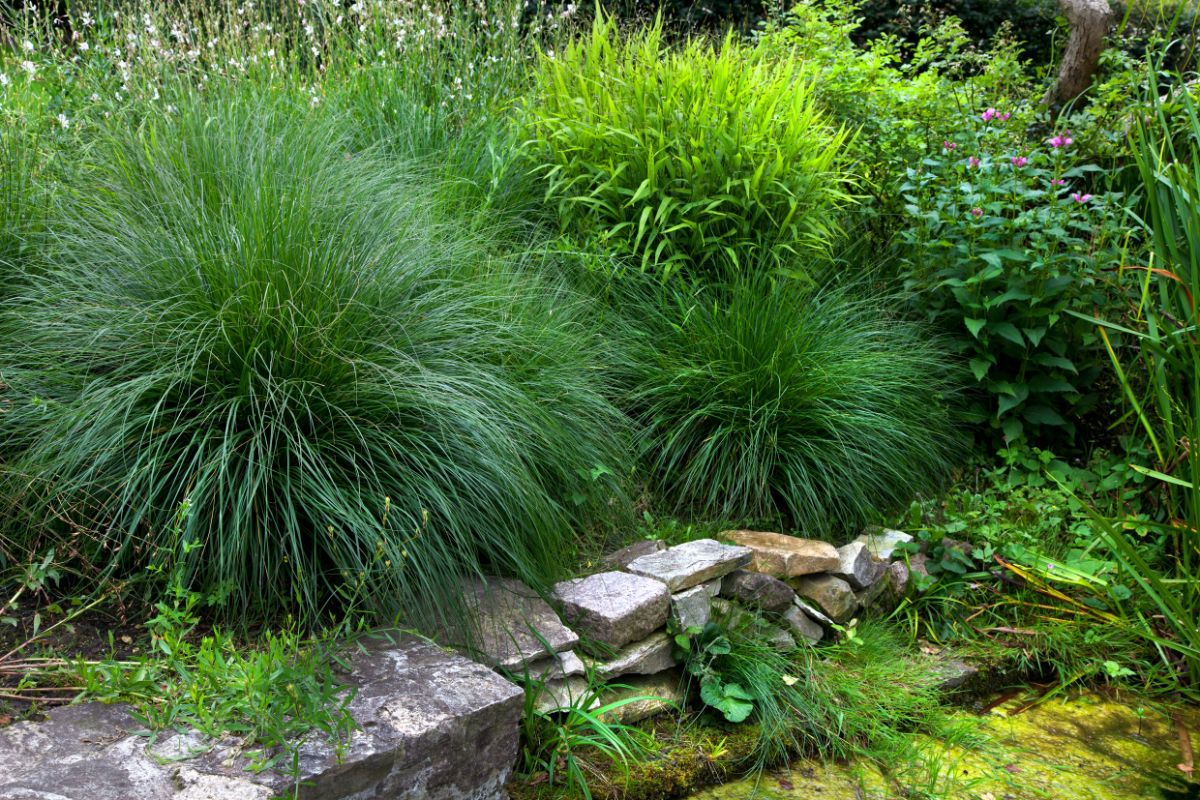
Perennial ornamental grasses are low-maintenance plants that add beauty to your garden, which is why it is called 'Ornamental'. Despite their versatility, they are effortless to grow, and no matter what season it is, they are often great texture additions and acclimatize to the weather.
Meanwhile, contrary to other grasses, you need to grow perennial ornamental grasses rather than mow them, and they feature varieties of shapes, sizes, species, and colors.
They are called perennials because they live for two years. Even though their foliage will die in the winter, the roots will not, as they come back yearly.
These perennials are gardeners' favorite because they are tough and drought-tolerant yet add great beauty from summer to winter with their gorgeous leaves and flowerheads. Apart from adding beauty to any landscape, perennial ornamental grasses have several other benefits.
For instance, they provide height even as they offer visual interest; they help to prevent erosion, and most are evergreen and will remain green all year.
Again, many perennial ornamentals require very little maintenance once established and feature stunning green foliage to help compliment your brightly-colored annual blooms.
Perennial Ornamental Grass Varieties
1. Pampas Grass
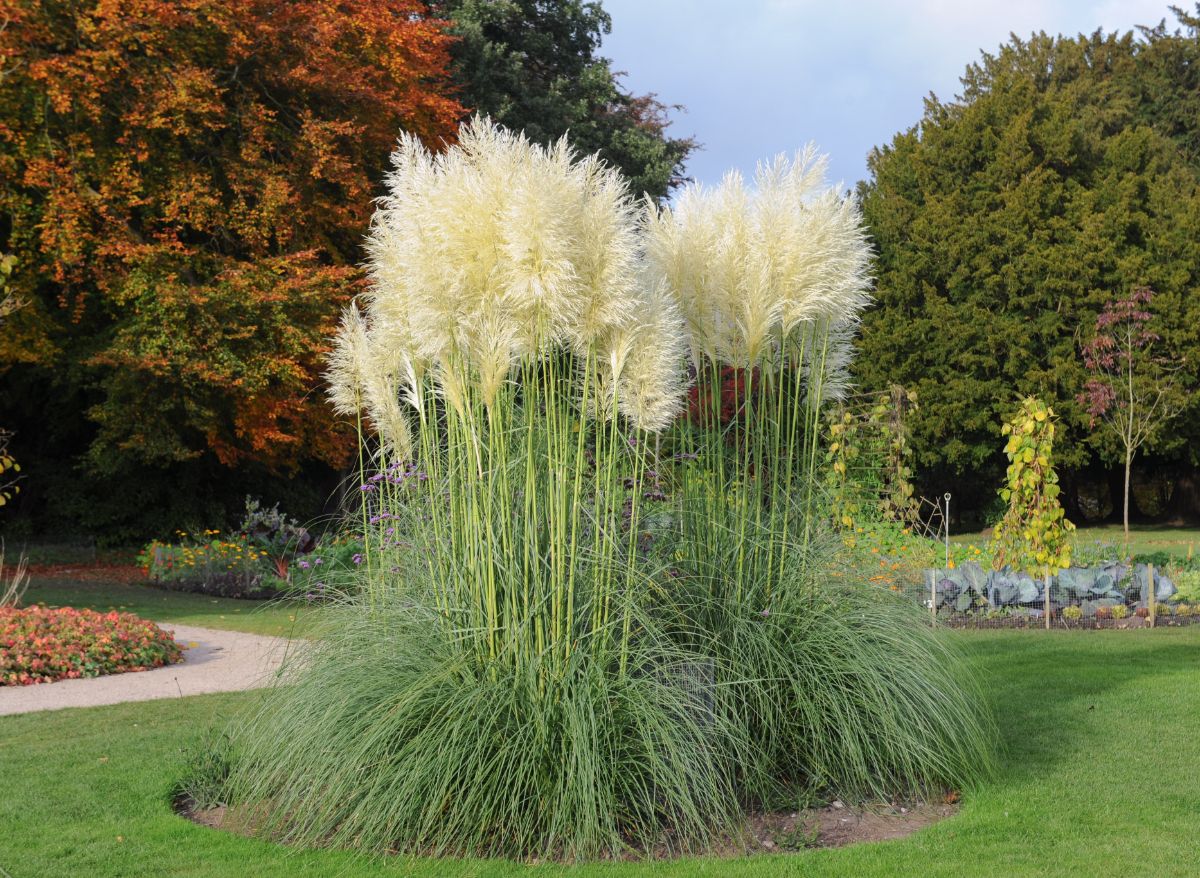
If you want your garden to display more beauty and attraction, you must consider Pampas Grass. There's a reason it appears at the top of our list. This perennial ornamental grass variety is primarily renowned in hot southern climates and probably features giant stalks blowing in the wind.
Hardy in zones 7 to 11, the pampas grass thrives in full sun and well-drained soil, which is why it is primarily seen in hot climates. It features razor-sharp leaves; therefore, you must be wary of pulling or trimming with bare hands.
Meanwhile, this plant is a rapid-growing giant perennial that can reach 8 to 14 feet in height and 8 to 10 feet in spread.
Pampas grass probably desires to divide during the winter to enhance more plants. It is a drought-resistant plant that will need little maintenance once it is matured. It is a deer-resistant plant ad stays evergreen in warmer seasons, while in colder seasons, its leaves tend to turn tan in color.
2. Feather Reed Grass (Calamagrostis 'Karl Foerster')
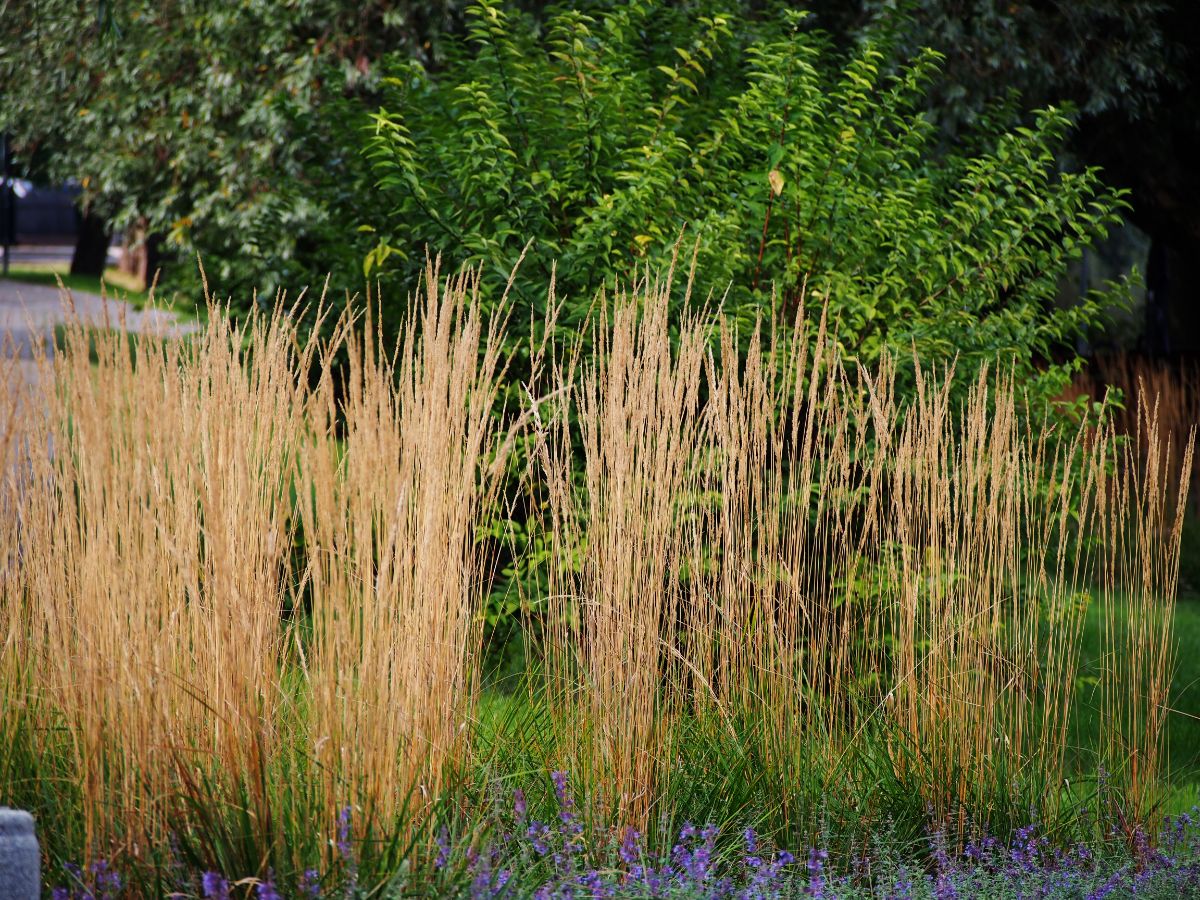
The next perennial ornamental grass variety on our top list is Feather Reed Grass. Unsurprisingly, it is the most popular ornamental grass on this list and has a unique upright growing nature looks stunning all through the winter. It will surely add visual interest to your garden with its colorful leaves.
Like most other grasses, Feather reed grass is a stubborn perennial variety that can withstand many conditions. It does best in full sun and prefers well-drained soil. Hardy in USDA zones 5 to 9, the Karl Foerster, as fondly called, can grow as tall as 6 feet in height.
3. Blue Fescue (Festuca glauca)
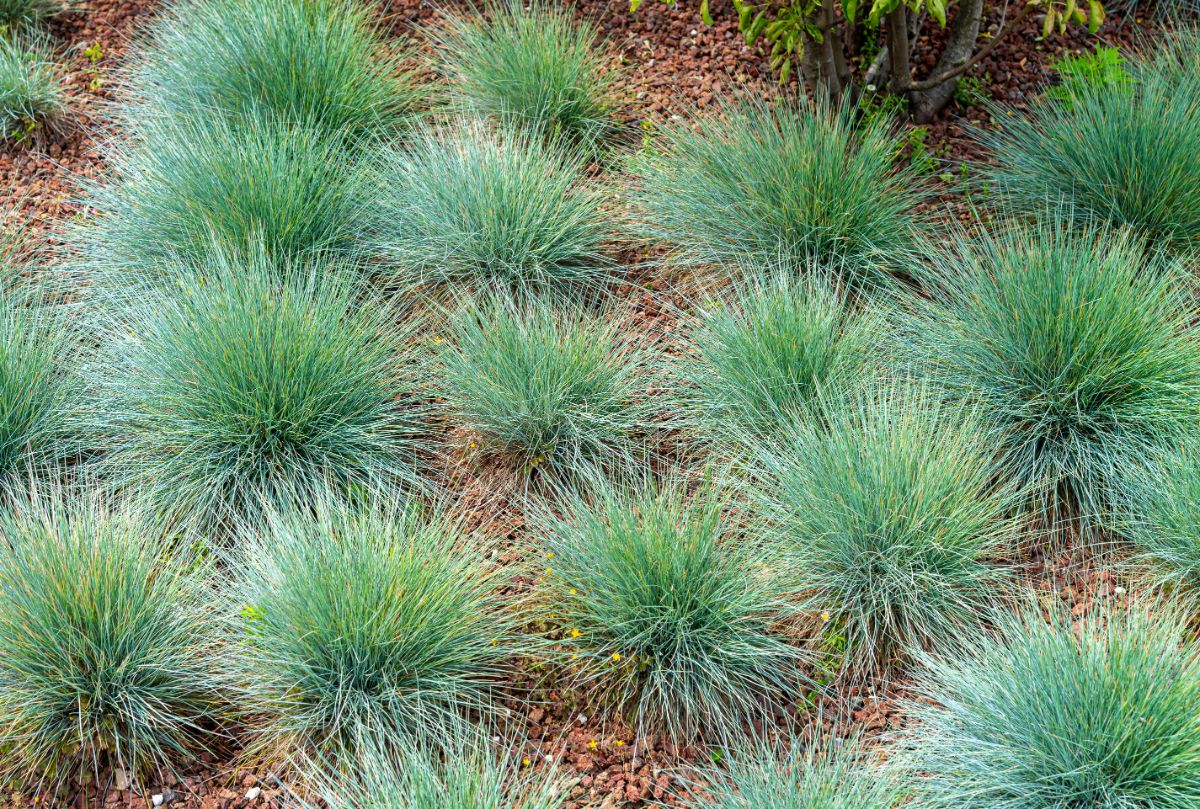
Blue Fescue will offer you that if you are looking for a stunning visual addition to your garden. Apart from the display factor, these plants are also famous for their height and like other types, they can help to prevent erosion.
Meanwhile, these species are evergreen and will stay green year-long. Also, like others, the Festuca glauca, scientifically called, requires very little maintenance once they are established and feature stunning green foliage that nicely compliments other plants around it.
Also known as steel-blue grass, this perennial variety is a more compact type that is perfect when grown in groups of three or five plants. But it would be best if you endeavored to place them in front of mixed borders as they can grow up to one foot tall. The blue fescue is hardy in zones 4 to 8.
4. Fountain Grass (Pennisetum alopecuroides)
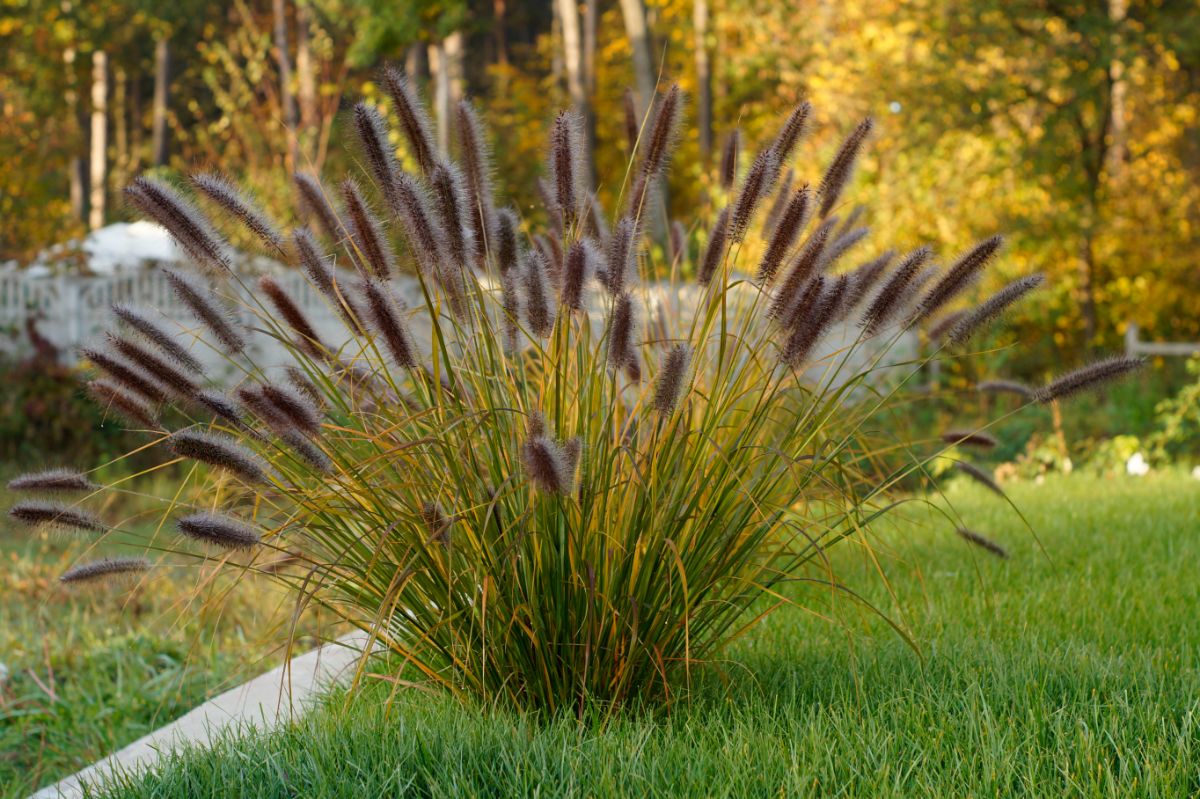
As long as perennial ornamental grass varieties are concerned, Fountain Grass is one of the best you will ever find. They are stunning, mounding perennials that provide a fantastic shape in addition to soft, feathery plumes that swirl with the breeze.
Scientifically known as Pennisetum alopecuroides, fountain grass is a drought-tolerant plant that does best in full sun. It also prefers a moderate soil type that is well-drained.
Hardy in zones 5 to 9, this stunning perennial ornamental grass variety can grow as tall as 5 feet in height. If you want to buy, we recommend you go for the Dwarf Ornamental Fountain Grass.
5. Pink Muhly Grass
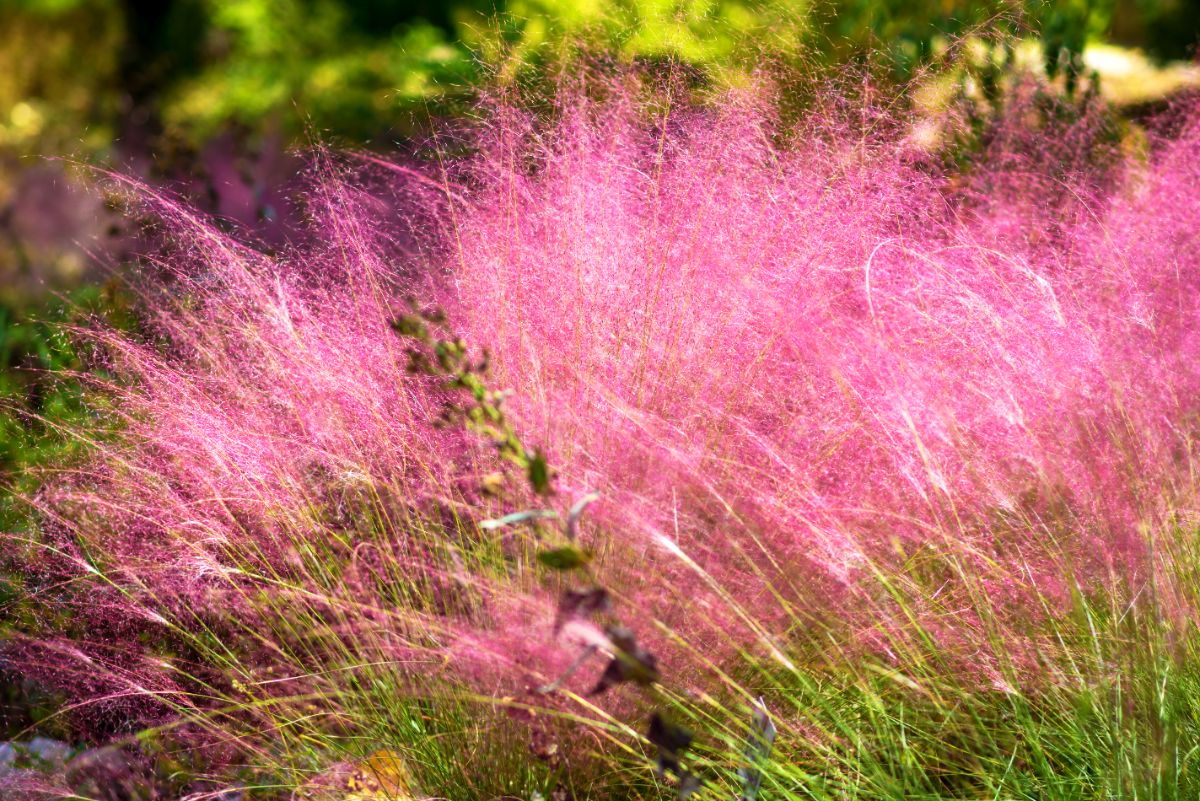
Among the wide perennial ornamental grass varieties, the favorite among gardeners and plant lovers is Pink Muhly Grass. What is there not to like? It is a stunning plant with great pinkish-purple plumes of color (especially in the fall) that can add visual interest to any landscape or flowerbed.
This variety features a wispy, delicate appearance and blends well with any garden plant (annual or perennial). Hardy in zones 6 to 9, pink muhly grass is tolerant to heat and drought and is a sun-loving perennial that thrives in full sun even though it can survive partial shade. It can reach up to 3 to 4 feet tall and spread.
6. Monkey Grass or Lilyturf (Liriope specie)
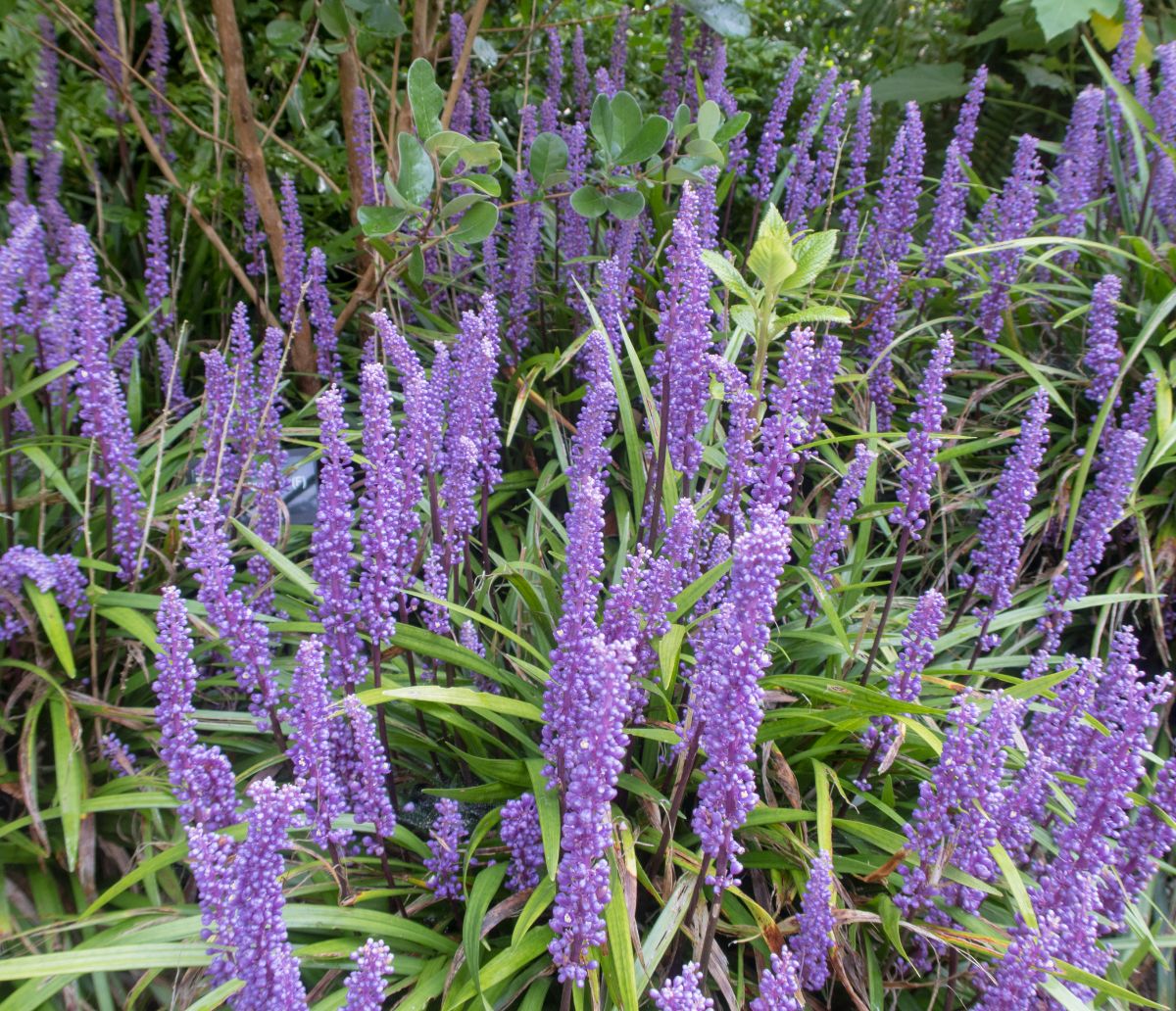
Are you looking for smaller perennial ornamental grasses? We recommend you go for the Liriope specie. This variety is a grass-like groundcover plant that is hardy and easy to grow. There are also species of the Liriope variety that come in purple or white blooms.
Also known as Monkey Grass, most varieties of liriope specie features beautiful blooms in a compact size, thus making it a perfect option for landscaping smaller areas and pathways. Hardy in zones 6 to 10, this perennial can survive both full sun and shade.
It is a perennial ornamental grass variety that can reach up to 10 to 18 inches tall and covers a width of about 18 inches. Meanwhile, it is resistant to deer and can be used along walkways, borders, or surrounding trees. If you want it to produce more of its kind, then you must divide it.
7. Little Bluestem (Schizachyrium scoparium)
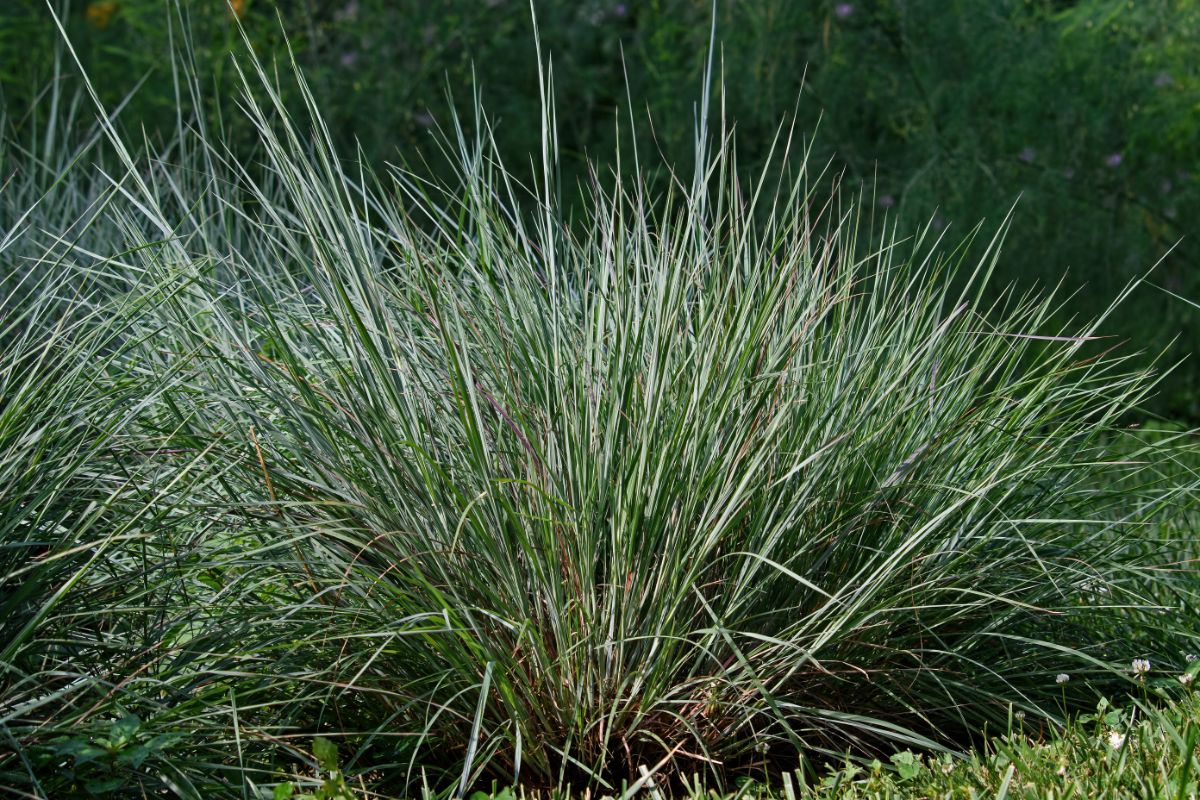
Little Bluestem is ideal if you want the perfect texture-adding perennial ornamental grass variety for your landscape. It is a stunning, tough-like-nails prairie native plant offering gray-green leaf blades that change to bold shades of purple, red, and orange during autumn.
Scientifically known as Schizachyrium scoparium, Little Bluestem, like most others, does best in full sun conditions and prefers well-drained moderate soil type. Hardy in USDA zones 4 to 9, this gorgeous perennial can grow as tall as 3 feet tall, thus making it a perfect option for any garden or container.
8. Switch Grass (Panicum virgatum)
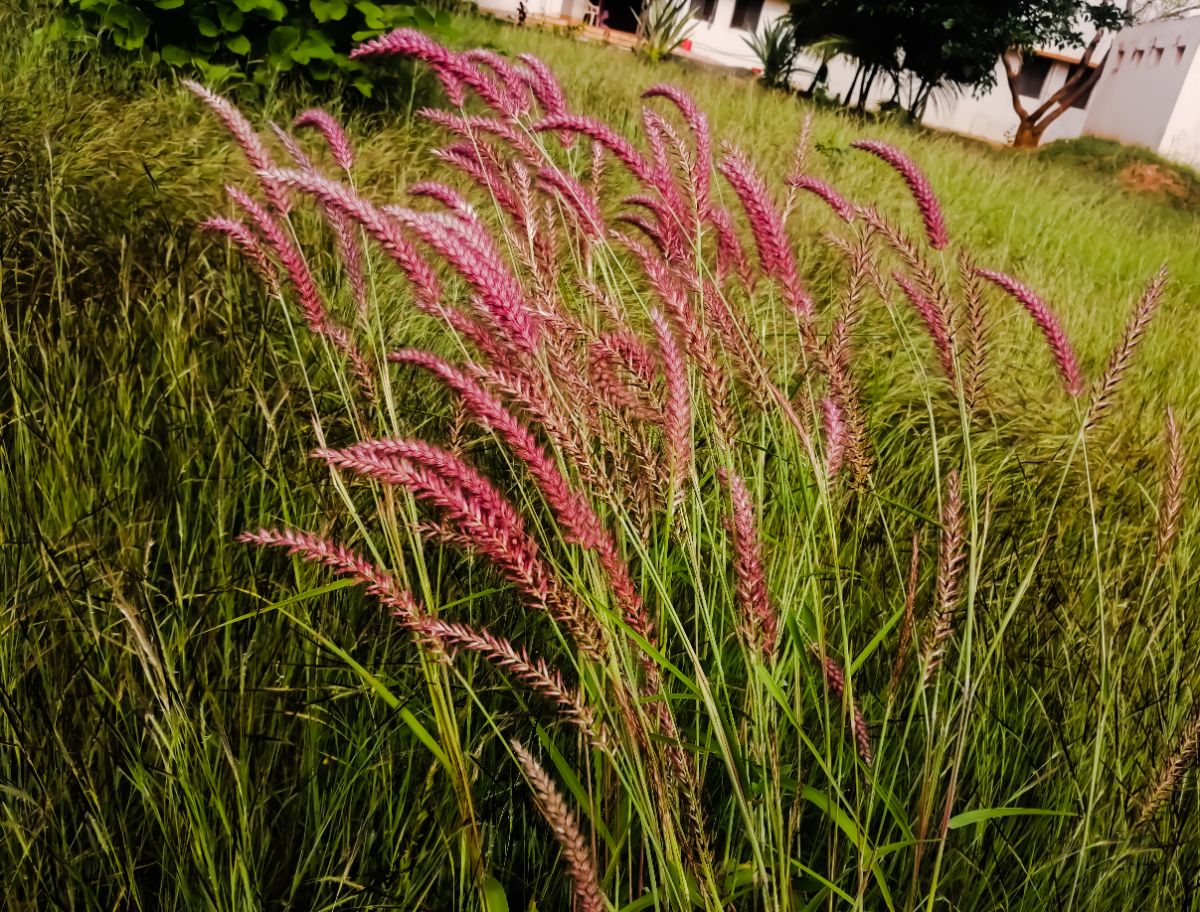
Another perennial ornamental grass variety that can brighten your garden with its stunning bright foliage is Switch Grass. Native to the North American prairie, this perennial grass features airy plumes in late summer and fall and looks perfect in the season. It is a giant plant reaching almost 5 feet tall.
It has different varieties, the most stunning being the Dallas Blues specie, which features blue-gray foliage in the season and changes to fantastic shades of gold or red in autumn.
Scientifically called Panicum virgatum, this perennial prefers full sun or partial shade and thrives in well-drained soil. It is hardy in zones 4 to 9.
9. Maiden Grass (Miscanthus Sinensis)

One of the most popular perennial ornamental grass varieties is Maiden Grass. This plant has a wide variety of different sizes and colors.
Some of them feature silvery white plumes. Others are pretty small and, therefore, suitable for every space. You can essentially find it in garden centers. The best time for planting and dividing it is in spring.
It is an easy-to-grow plant slightly shorter than Pampas Grass ornamental variety at complete height/width. Hardy in zones 5 to 10, the maiden grass does best in full sun, and most of its species can reach 3 to 10 feet tall and 4 to 6 feet wide. It is a drought-tolerant plant, especially once established and resistant to deer.
10. Purple Fountain Grass (Pennisetum setaceum 'Purpureum')

Another attractive option for your landscaping is Purple Fountain Grass because of its striking purple leaf hues. It features several green leaves that can brighten your garden area.
However, unlike several other perennial ornamental grass varieties, this plant is a rapid-growing variety that is not hardy to cold.
In other words, the purple fountain grass variety cannot withstand long stretches of frost climates but can survive in colder temperate as long as you overwinter it indoors. Hardy in zones 9 to 11, this perennial is a low-maintenance variety once established and is resistant to deer.
It is an ornamental grass specie that can reach up to 4 feet tall and is similar in width. If you want the plant to produce more of its kind, then you must divide it. The ideal time to plant it is spring if you desire the best result. Again, you must deadhead the plant in early spring if you want it to experience new growth.
11. Blue Oat Grass (Helictotrichon sempervirens)
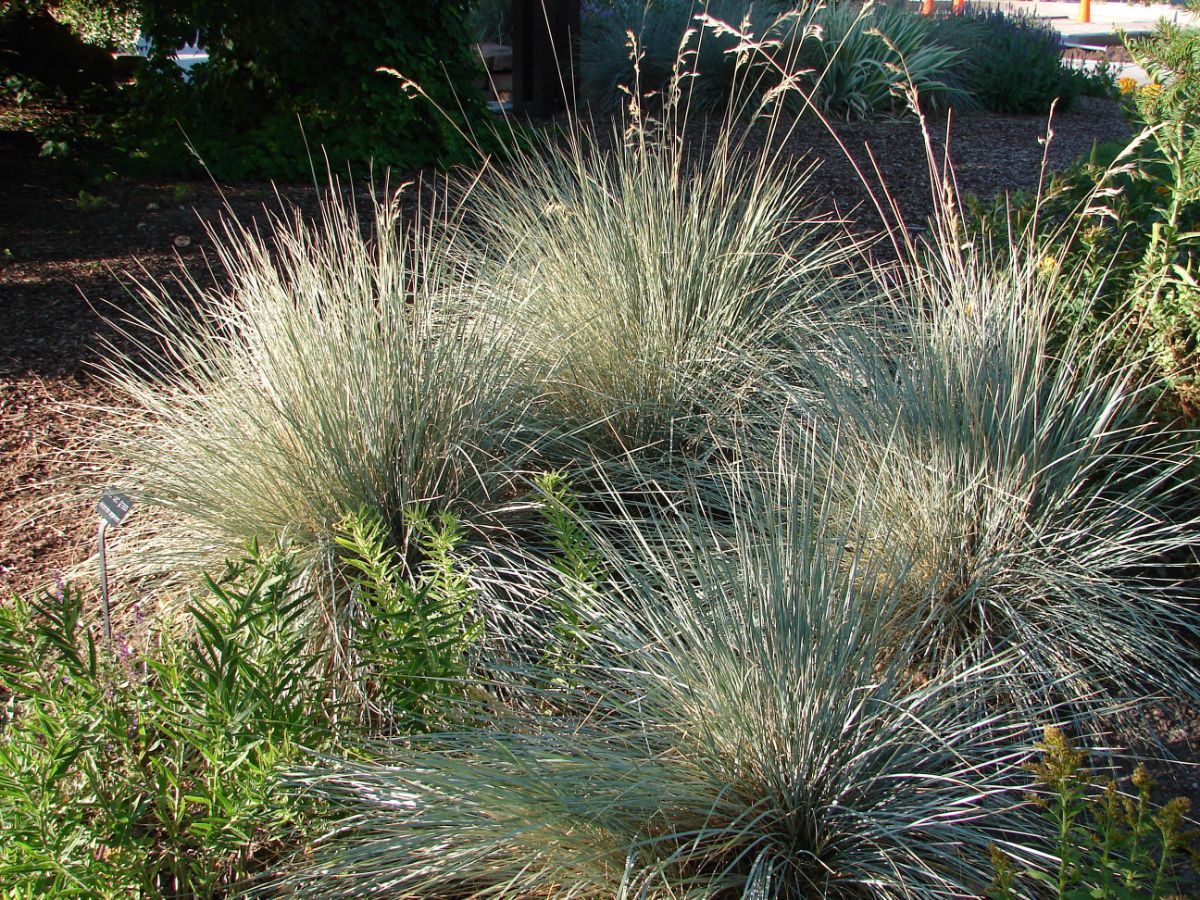
If you desire the best low-maintenance perennial ornamental grass variety, Blue Oat Grass is the best option. It is not only easy to grow and maintain, but it also features a pure mounded nature. In other words, these unique plants would not spread and occupy the whole garden.
Scientifically known as Helictotrichon sempervirens, the blue oat grass is a stunning plant that prefers full sun conditions. It does best in well-drained soil and can grow up to 4 feet tall. Meanwhile, this perennial plant is hardy to USDA zones 4 to 9.
12. Purple Millet (Pennisetum glaucum)
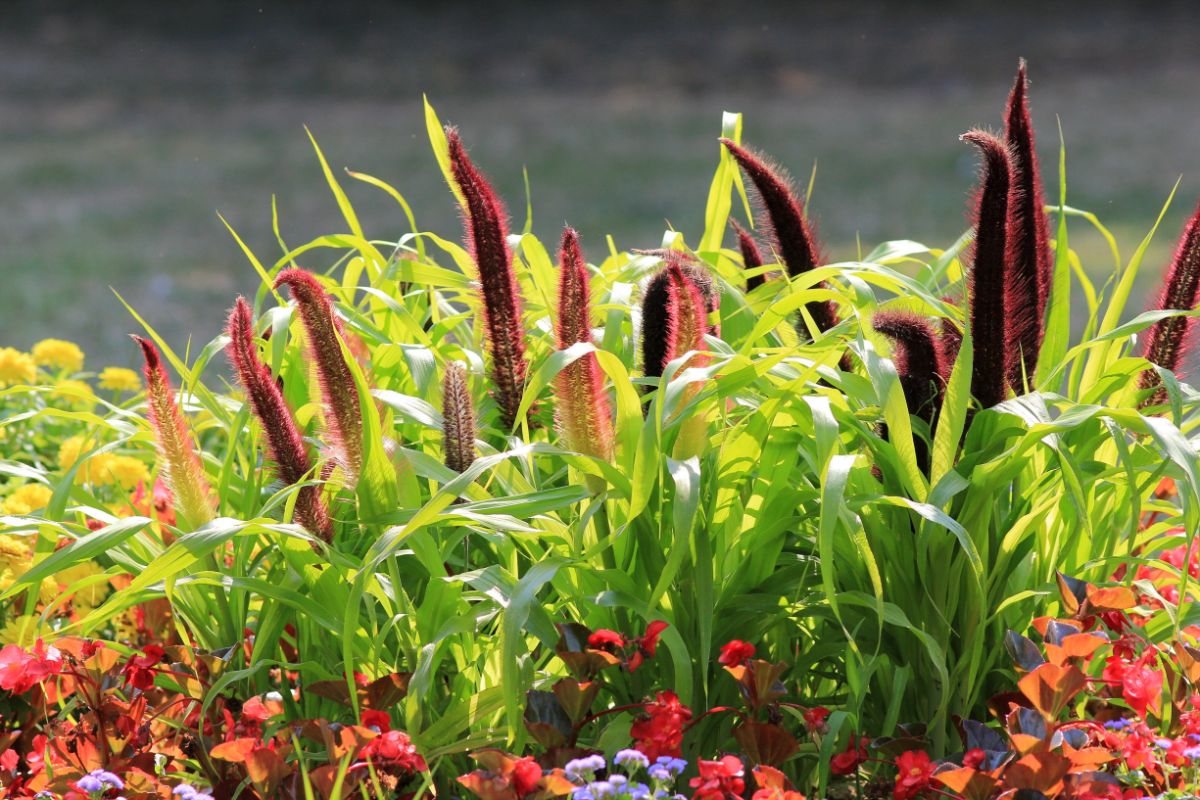
Are you looking for a perennial ornamental grass variety for a warm season, perfect for a warm-season garden? The best option on our list is Purple Millet. It is a stunning plant that produces gorgeous blooms that become beautiful seed heads in fall.
It is among the gardeners' favorite as they are tough and tolerant to drought, and it is also a colorful addition from summer to winter with its beautiful leaves and flower heads.
Purple millet is a visually interesting perennial feature by itself in containers, beds, or grown with other plants in pots, be it annuals or perennials.
13. Fiber Optic Grass (Isolepis cernua)
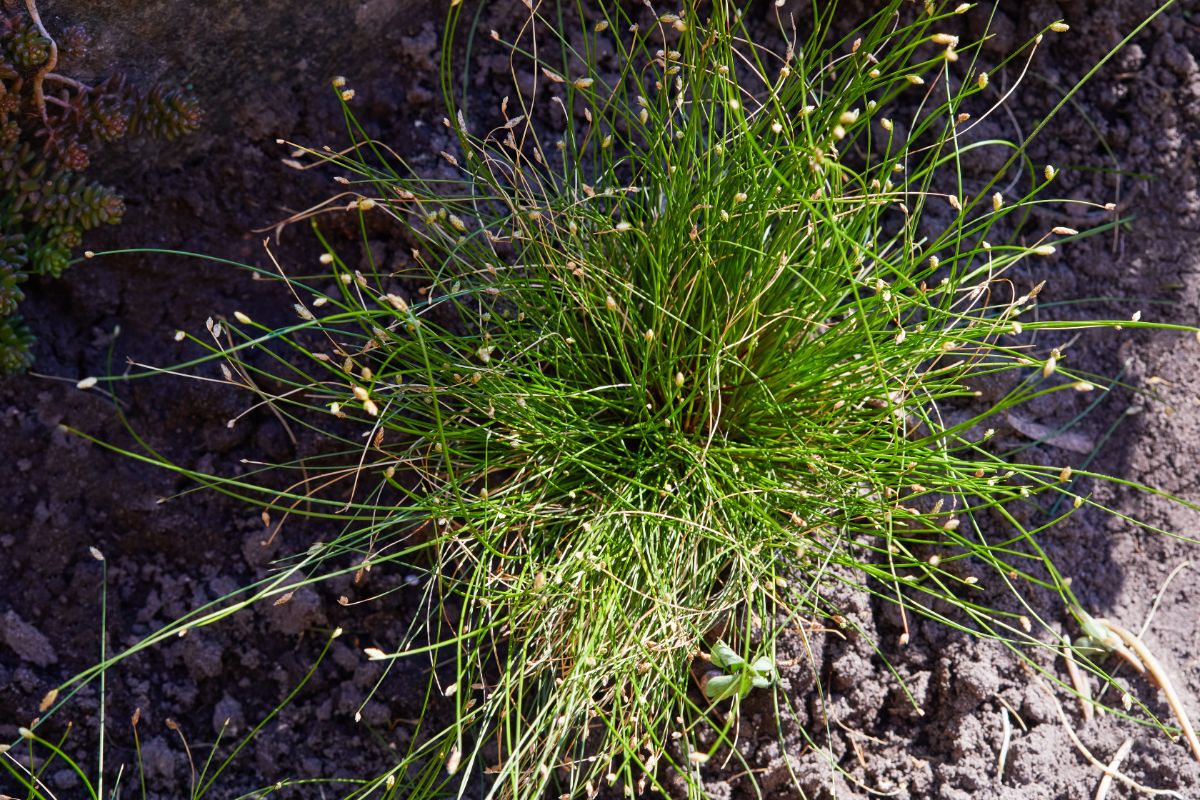
Fiber Optic Grass is a beautiful grass with slender, fluffy blooms on the edge of the stems, which make it look like a fiber optic light. This perennial variety can reach up to 1 foot tall and is mainly seen as an annual plant in most parts of the world. However, you can bring it indoors to grow it as a houseplant.
Apart from the beauty it brings to any garden; this perennial ornamental grass variety has many other benefits. It is among those evergreen plants that will stay evergreen throughout the year.
It is also easy to grow and maintain a plant, especially after it is established. Fiber optic grass prefers well-drained soil and is full to partial sunlight conditions.
14. Cord Grass (Spartina pectinata)
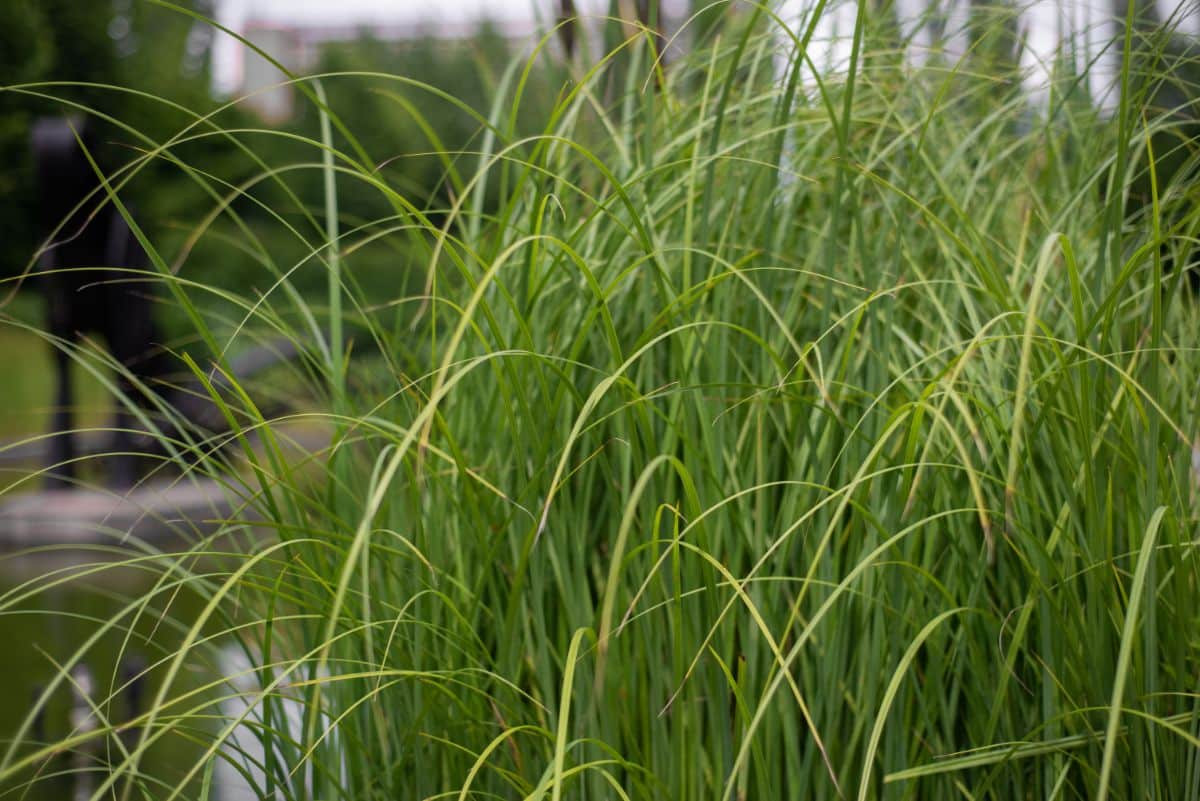
If you are looking for a perfect showy perennial for any garden, consider adding Cord Grass to your landscape collections. It is an under-used perennial ornamental grass variety that does best in moist but well-drained soils. It is hardy in USDA zones 4 to 7.
It is a perfect alternative for planting close to a pond or stream, which is why it is best when watered adequately. Scientifically known as Spartina pectinata, the cord grass is a spreading prairie grass that prefers full sun conditions and is a tall perennial of about 7 feet.
15. Japanese Forest Grass (Hakonechloa macra' Aureola')
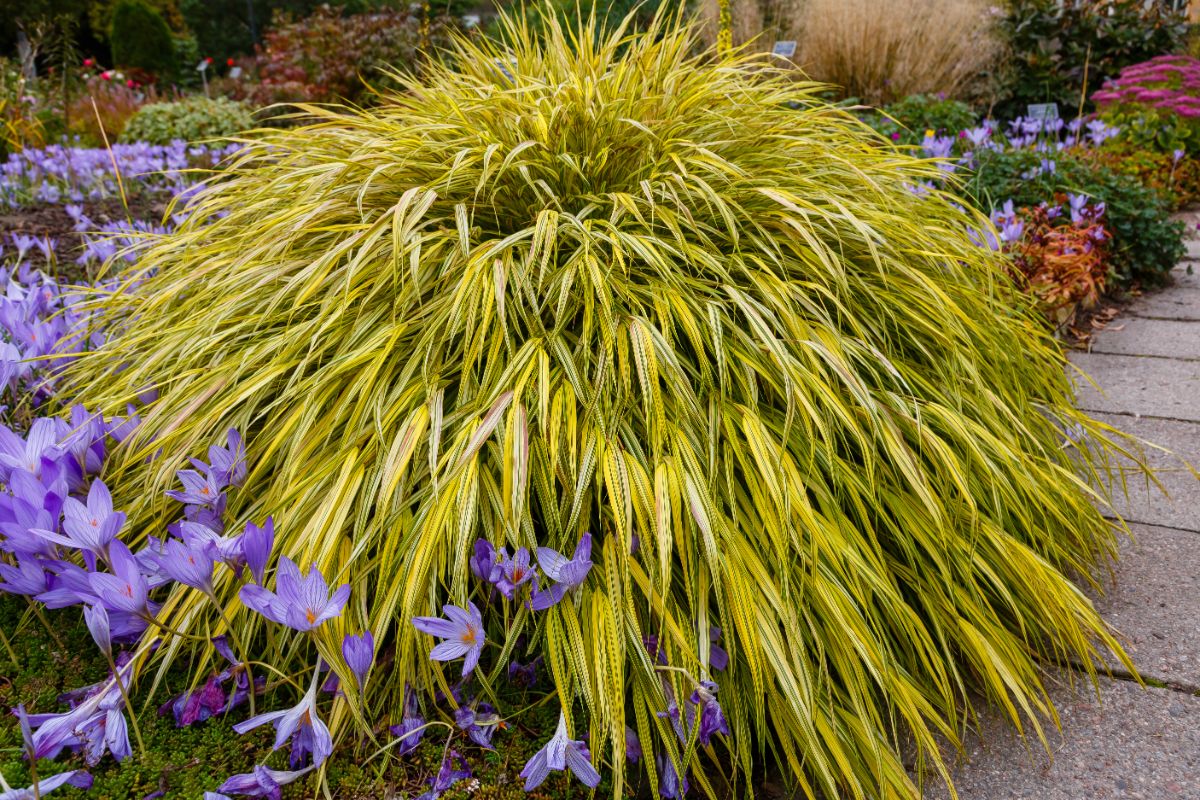
Are you planning to add a low-maintenance perennial to your garden? Have you thought about the incredible Japanese Forest Grass variety? This specie will beautify your landscape areas and help compliment your stunningly colored annual flowers with gorgeous foliage.
Regarding foliage, Japanese forest grass is a striking grass with solid green or variegated gold arching leaves that make for a stunning colorful blend with any other plant in your garden. It can grow as tall as 18 inches and is among the few ornamental types of grass that survive some shade. It prefers moderately moist and well-drained soil.
16. Ravenna Grass (Saccharum ravennae)
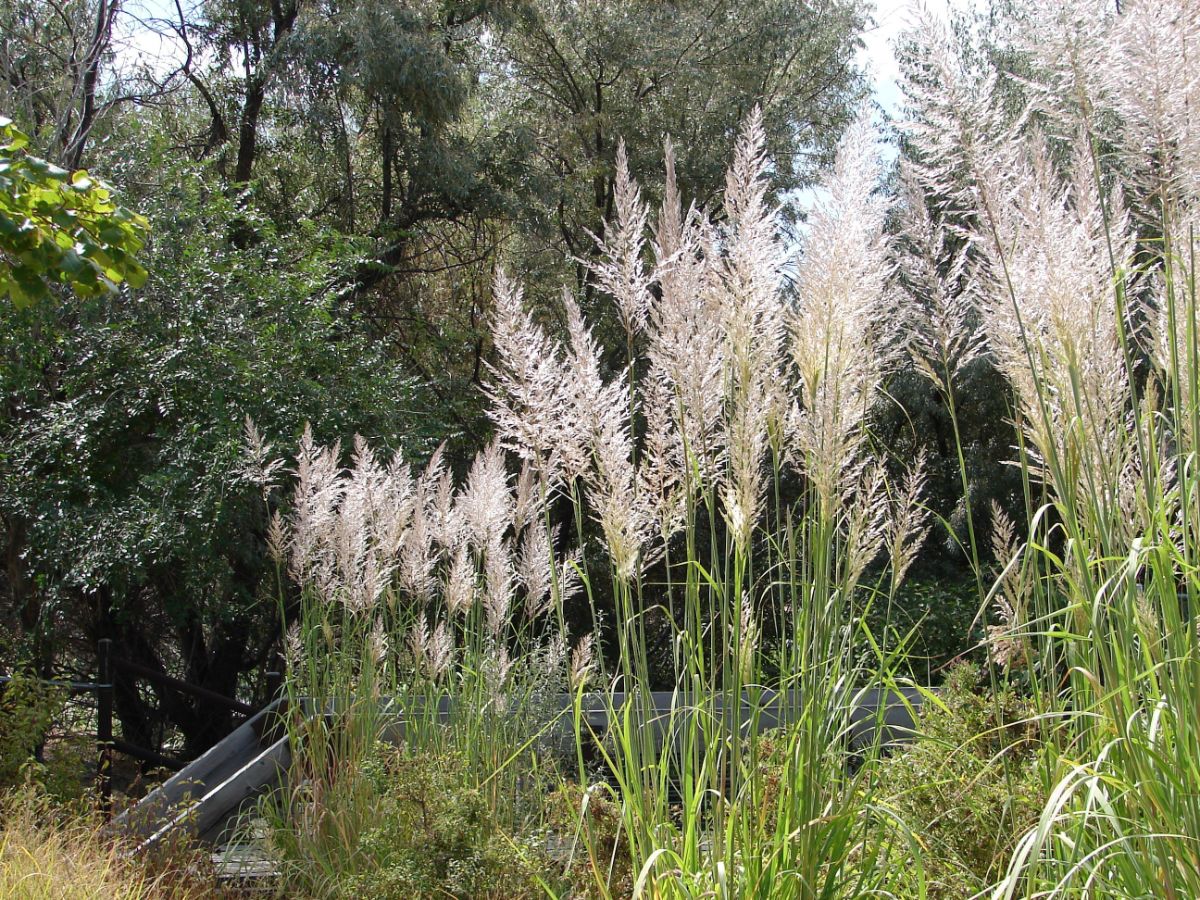
If you are looking for low-maintenance perennial ornamental grass that will beautify your garden and add great texture to any landscape, then you must not look past Ravenna Grass.
This unique specie is a massive, rapid-growing perennial variety that grows giant, silvery plumes reaching over 10 feet in height.
If it is a plant that can acclimate to any climate you seek, you can trust the Saccharum ravennae specie. However, if you grow in the autumn landscape, it will make the strongest statement. Hardy in zones 6 to 9, Ravenna grass prefers full sun condition and well-drained soil, and the plant itself can reach almost 12 feet tall.
17. Mondo Grass

One of the most cherished plants for any gardener is Mondo Grass, and this is because it is easy to plant and maintain yet makes for a perfect ground cover when grown in groups. This stunning plant is very tough and drought-tolerant.
Mondo Grass is a great beauty addition from summer to winter thanks to its attractive leaves and flowerheads. It has different color varieties, most commonly shades of pale green and dark burgundy.
This unique perennial ornamental grass prefers full sun to partial shade conditions and thrives in moist, well-drained soil.
18. Hair Grass (Deschampsia cespitosa)
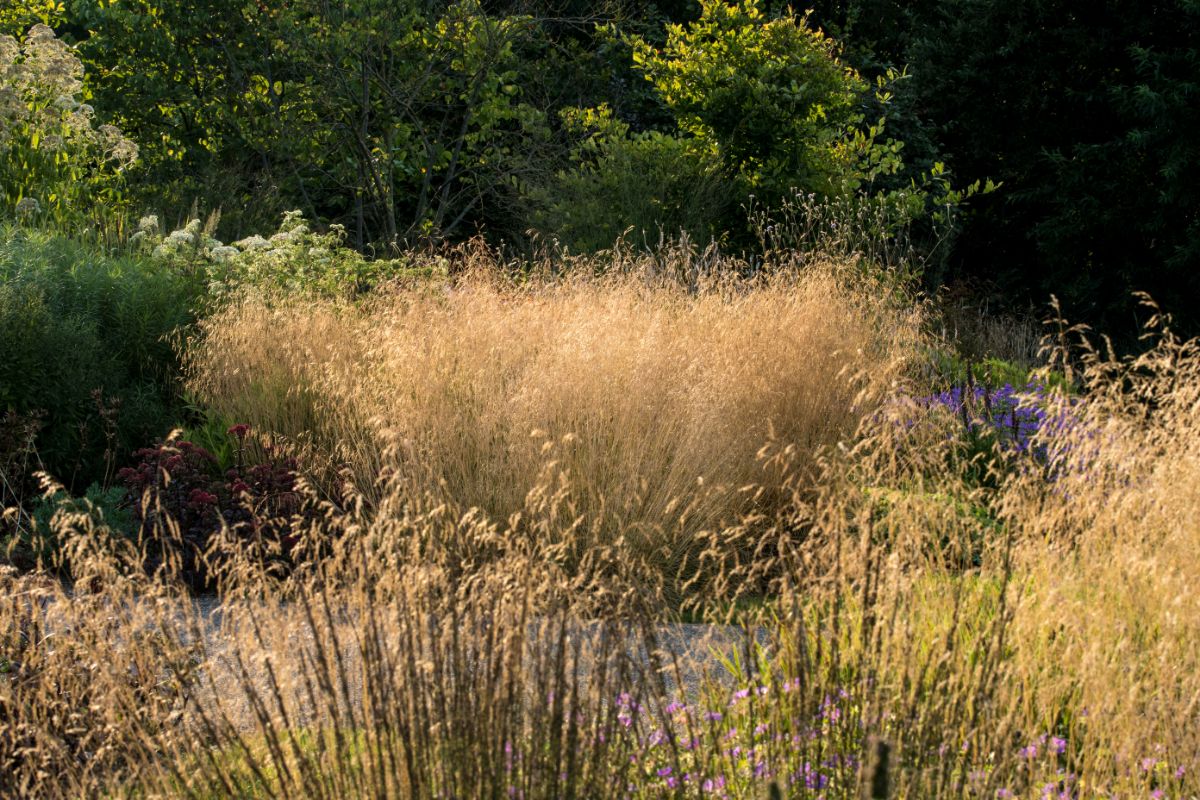
Hair Grass is one of the most popular perennial ornamental grasses on our top list. It is an evergreen grass that stays green depending on the climate. It features airy plumes in various colors ranging from golden, silver, purple, and green. Hardy in zones 5 to 9, this perennial can reach 6 feet tall.
The stunning color shades make it a perfect addition to any garden, as it will brighten the garden area. Scientifically called Deschampsia cespitosa, hair grass is also commonly known for its excellent mounding habit.
It thrives in full sun to partial shade conditions and prefers moist, well-drained soil. Dwarf hair grass is available for purchase in garden stores.
19. Woodrats (Northern Sea Oats)
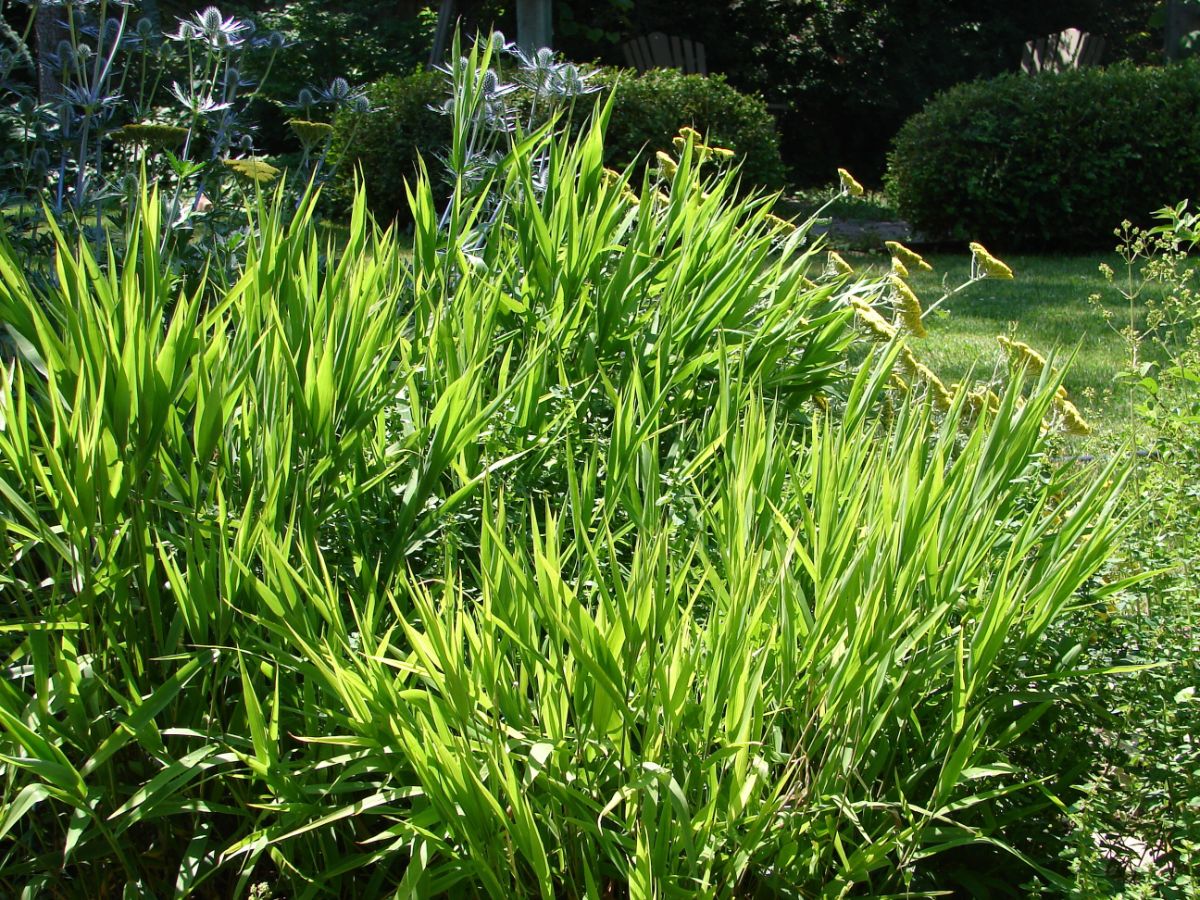
As long as perennial ornamental grasses are concerned, Northern Sea Oats is the perfect option for several hardiness zones. It features flowy, delicate-looking foliage well-suited to landscape and drying for decoration. This foliage turns to a bronze copper color in the fall season. It is a deer-resistant perennial ornamental grass.
Hardy in USDA zones 3 to 8, Woodoats, as it is better known, can survive in different conditions such as dry, salty, cold, shady, and wet soils.
It can grow up to 2 to 3 feet tall and 1 to 3 feet wide and germinate on its own with seeds; therefore, you must remove the faded seeds to avoid more plants. It can also survive both full sun and shady areas.
20. Purple Moor Grass (Molinia caerulea)
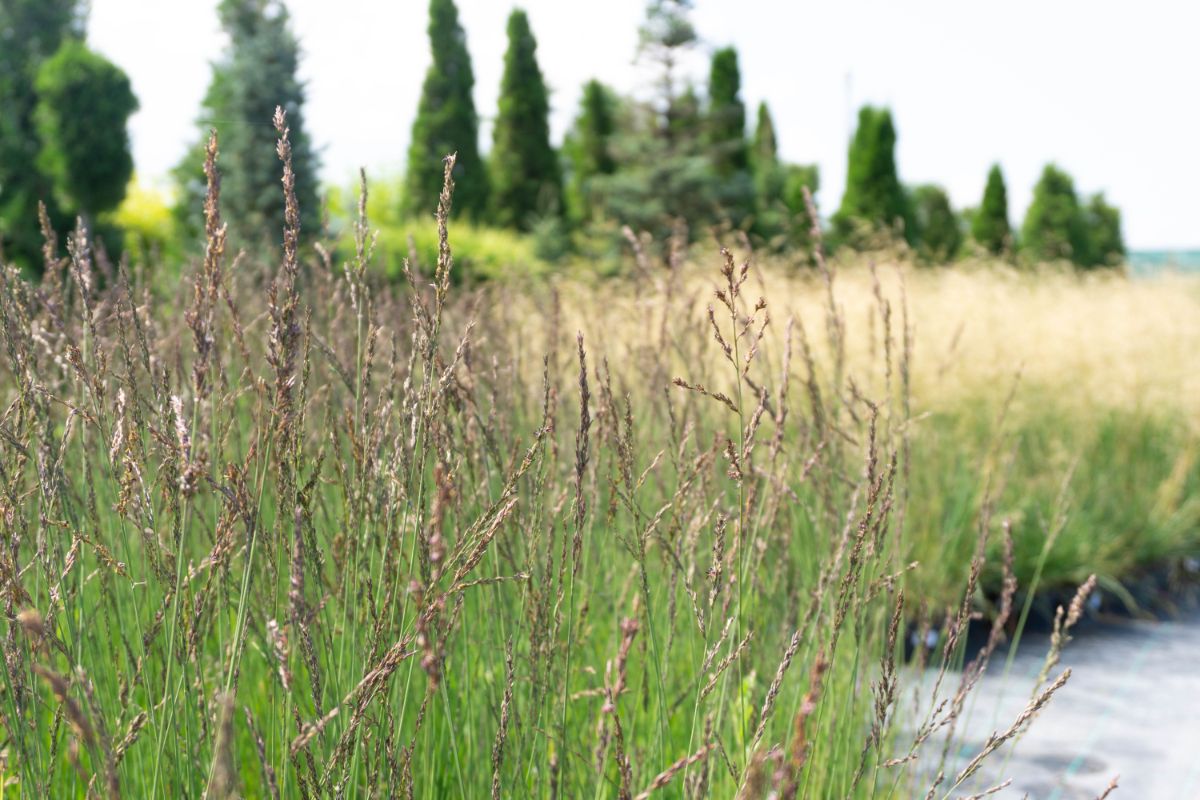
The following fantastic perennial grass variety on our top list is Purple Moor Grass.
It doesn't matter where it appears on this list; the Molinia caerulea is one of the best perennial ornamental grass varieties that can beautify any landscape and add great texture to your garden. It can reach up to 5 to 9 feet tall, depending on the specie you are going for.
Purple moor grass produces attractive mounding foliage that changes color to brilliant gold in autumn and is a perfect prospect for partially shaded landscape areas. Hardy in USDA zones 5 to 9, this stunning plant does best in full sun or partial shade areas and thrives in moist, well-drained soil.
21. Sedge
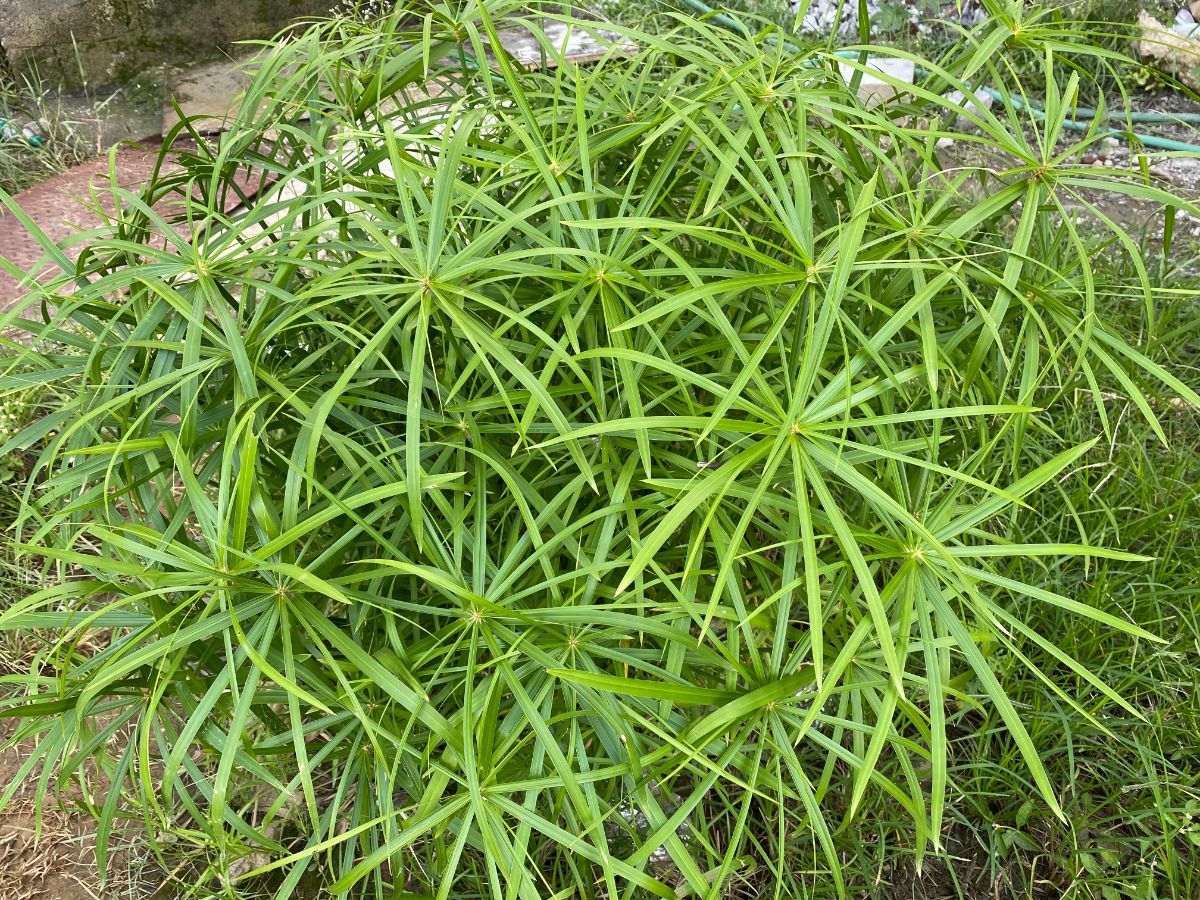
One of the most popular yet less grown varieties of perennial ornamental grasses is Sedge. It is a unique perennial ornamental grass variety that features several species. But generally, Sedge is a clump-forming perennial plant that offers a colorful décor to any garden and indoor garden.
It features arching leaves that you can find in varieties of color shades, including bright gold, green, or even variegated types.
This plant will not only add stunning color to your garden but also enhance privacy, prevent erosion, and offer an excellent food source and birds shelter. It prefers full sun to partial shade conditions and thrives in moist, well-drained soil.
22. Zebra Grass (Miscanthus Sinensis 'Strictus')
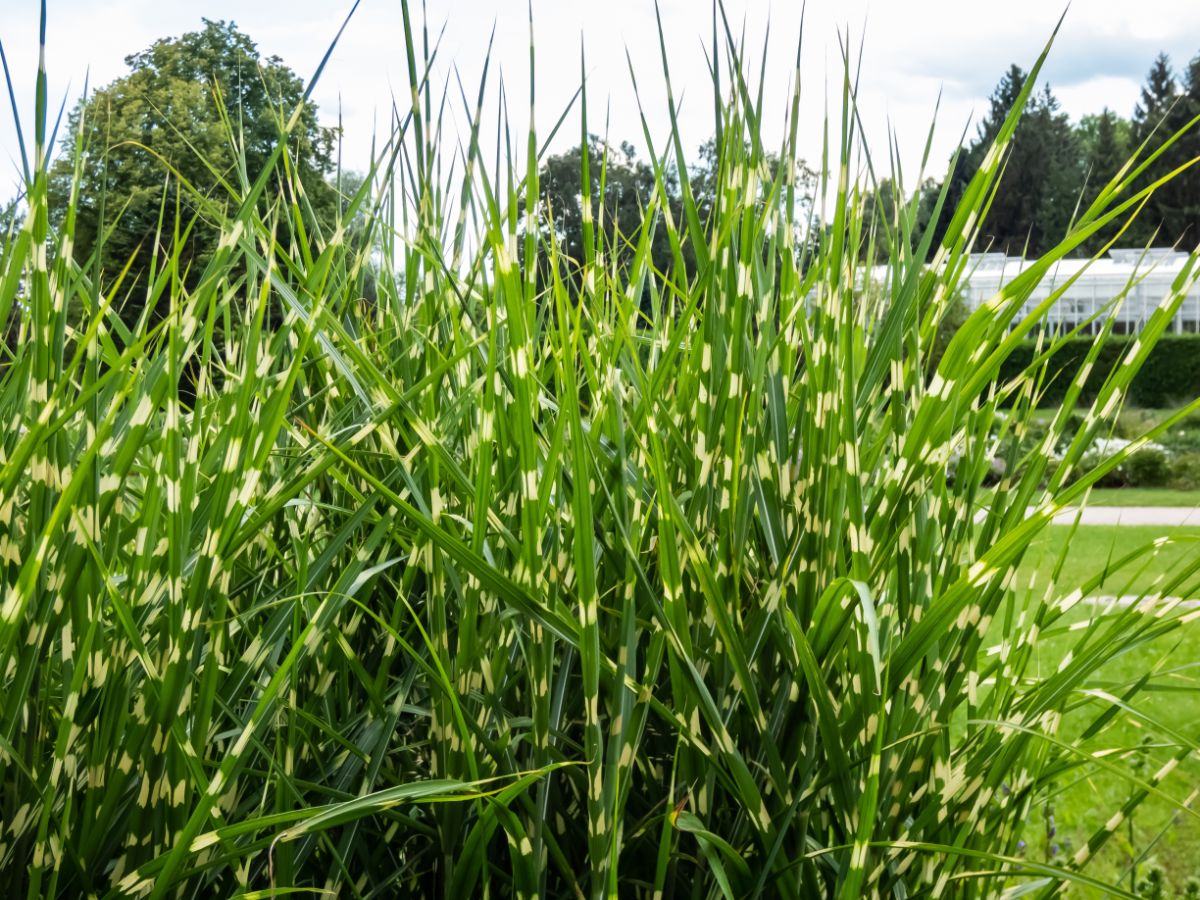
If you are looking for an ornamental perennial grass with a perfect blend of colors to make your garden stand out, then your ideal pick should be Zebra Grass. Each leaf blade of this plant has a series of bright yellow bands, uncoincidentally where the plant got its name.
It is an excellent plant that will give your garden a new look as it can blend nicely with other plants, be it annual, biennial, or perennial, thanks to its attractive zebra color combinations. Meanwhile, this stunning plant has a tremendous upright habit, which looks even more well-suited in any perennial border.
Scientifically known as Miscanthus Sinensis 'Strictus', the zebra grass does best in full sun conditions and prefers moist, well-drained soil. Hardy in USDA zones 4 to 9, this perennial ornamental grass variety will reach up to 5 feet in height.
23. Dwarf Pampas Grass (Cortaderia selloana ‘Pumila’)
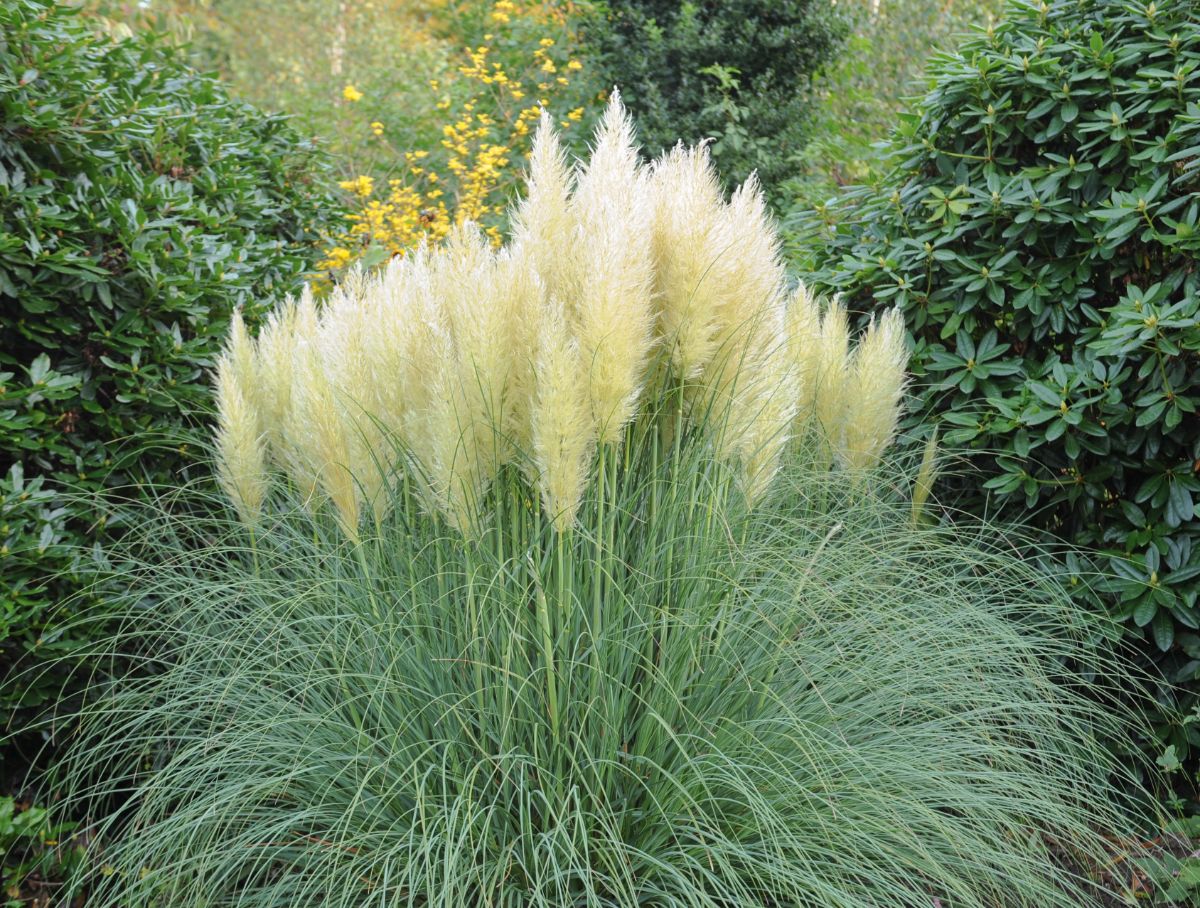
It seems almost all pampas’ species are great perennial ornamental grasses. Pampas grass has many different species; we have discussed its enormous variety earlier in this article (back to number 1), so it's time to pick on the more dwarfed specie, otherwise known as Dwarf Pampas Grass.
Scientifically known as Cortaderia selloana' Pumila', the dwarf pampas grass is a 4 to 5 feet tall perennial grass that grows shiny white bloom plumes in the late summer and fall. The best place to grow it is behind the border, where you can see the best of its flower heads throughout the winter.
Like the standard pampas grass, this short specie has an invasive habit; therefore, it would be best to grow it where its roots can spread, providing it with a spacious area.
This perennial is resistant to deer and is drought-tolerant. Hardy in zones 6 to 10, the dwarf pampas grass prefers full sun and can survive in any soil type, as long as it's well-drained.
24. Big Bluestem (Andropogon gerardii)
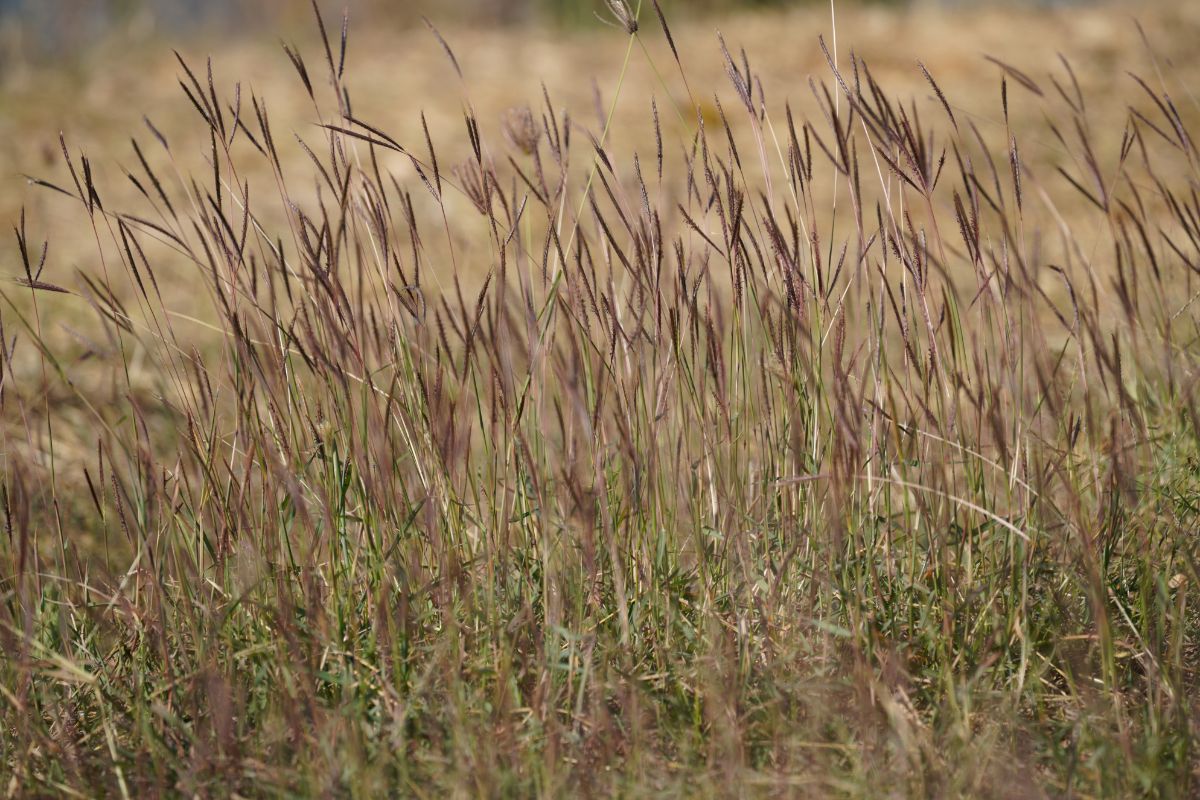
Another great perennial on our top list of perennial ornamental grasses is Big Bluestem. Native in the American region, this stunning grass variety is a tall, gorgeous plant that can fit seamlessly into any garden. It can be sluggish in taking hold but will eventually produce large, upright clumps.
Apart from the extra beauty, it brings to any landscape, the big Bluestem will also enhance privacy, prevent erosion, and is an excellent source of food and housing for air creatures like birds. Meanwhile, this plant thrives in full sun and does best in moist or dry soils, as long as they are well-drained.
In the spring, it has blue-green foliage that eventually turns green with shades of red and ends with reddish-bronze in the fall. Scientifically called Andropogon gerardii, this perennial grass variety can grow up to 4 to 8 feet tall and is hardy in zones 4 to 9.
25. Mexican Feather Grass (Nassella tenuissima)
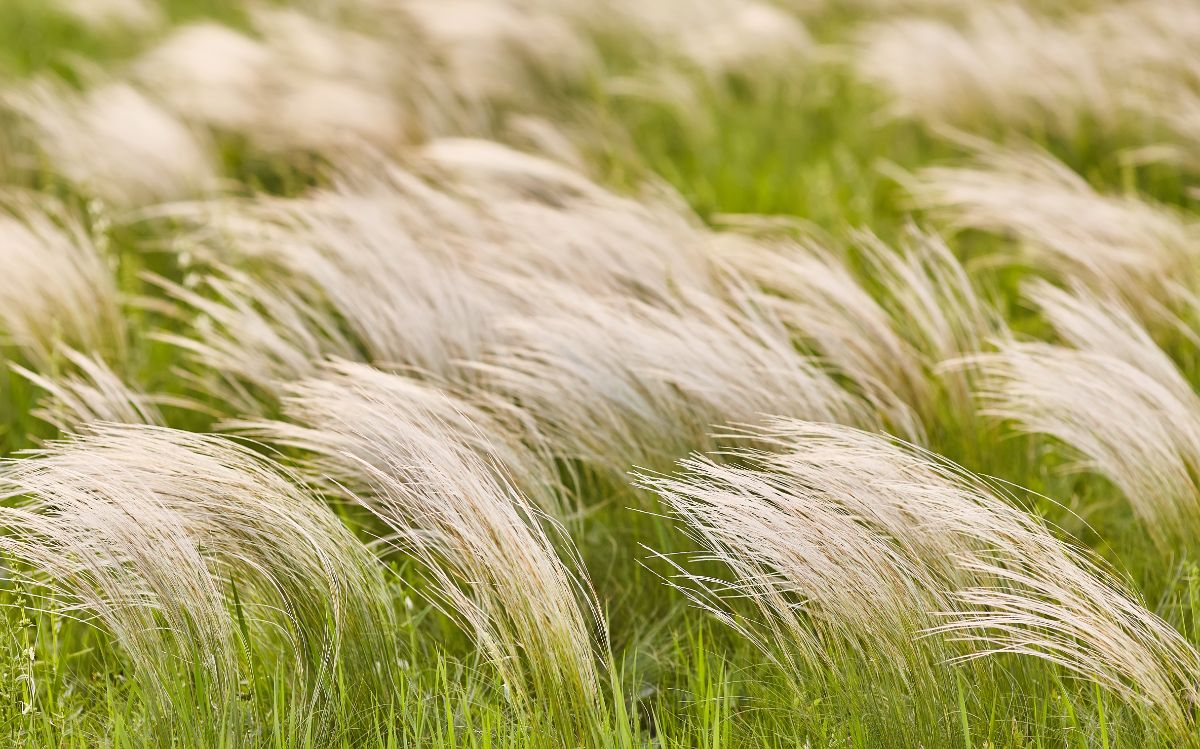
Concluding our top list of perennial ornamental grass varieties is a beautiful gem known as Mexican Feather Grass. This perennial's delicate flower stalks and slender leaves will always dance happily to even the slightest breeze. Hardy, in zones 6 to 10, can reach up to 3 feet tall.
It is a perfect container plant and can also do very well if you scatter it in a meadow or slope. Apart from beautifying your garden, the Mexican feather grass is also a reliable helping hand to control erosion.
Scientifically called Nassella tenuissima, this stunning plant does best in poor, well-drained soil and can even survive dry conditions.
Growing Tips for Perennial Ornamental Grass Varieties
As far as perennial ornamental grasses are concerned, it is a no-fuss addition to any perennial landscape. These plants have dominated every rage in garden circles, and you won't blame them for that; after all, they are many gardeners' favorite.
These tough and drought-tolerant plants make beautiful additions from summer to winter, thanks to their gorgeous leaves and flower heads. Before planting, choose one that's hardy for your region with your preferred growth habit, be it bunching or spreading; then, you are good to go.
When & Where to Grow Perennial Ornamental Grasses
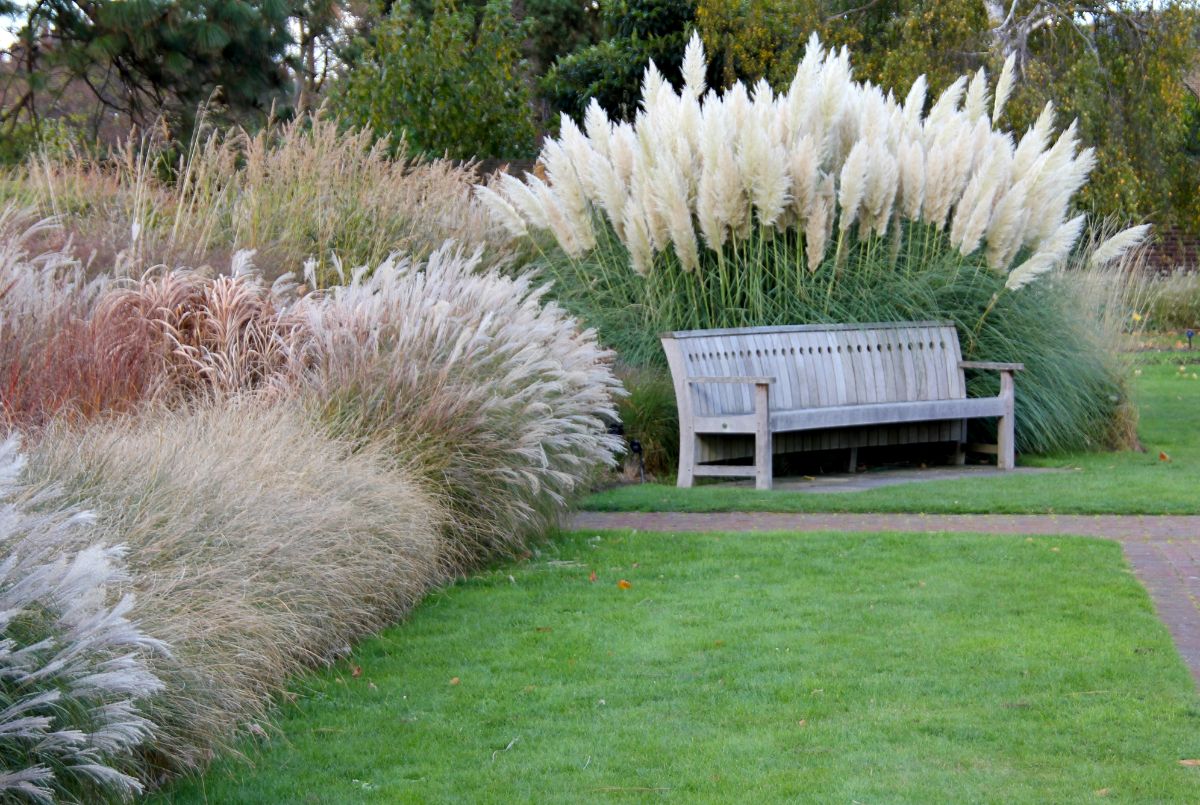
Before you plant your perennial ornamental grasses, you must ensure that you provide them with the requirements and conditions to make them thrive. The following are things to consider in growing successful perennial ornamental grass varieties;
Lighting Growing Tips
A close look at all the perennials in our top list will tell you that they all grow and flower best in full sun conditions.
Even though some of them can survive a partial shade or shade, they will not produce the abundant flowers that those in full sun will yield. Again, part shade or shady conditions will make your ornamental grasses grow leggy.
Soil Tips
Most ornamental grasses do not select particular soil conditions. In other words, they will survive in any soil, whether poor or fertile. However, you can add compost to the soil to enhance your plants' overall vigor.
Spacing
Perennial ornamental grasses need spacing of about 1 to 3 feet apart based on the type. If you desire to see your plants form a strong wall of greenery, you must grow them close to each other. Spreading fastens the filling rate than clumping type grasses; therefore, it would be best to plant further apart.
Planting Time & Area
The best time to plant perennial ornamental grasses is in spring to give them enough time to become established before winter.
But if you are living in warmer regions, it would be best to plant in fall, as that is the area winters are not so devastating.
Growth Habit
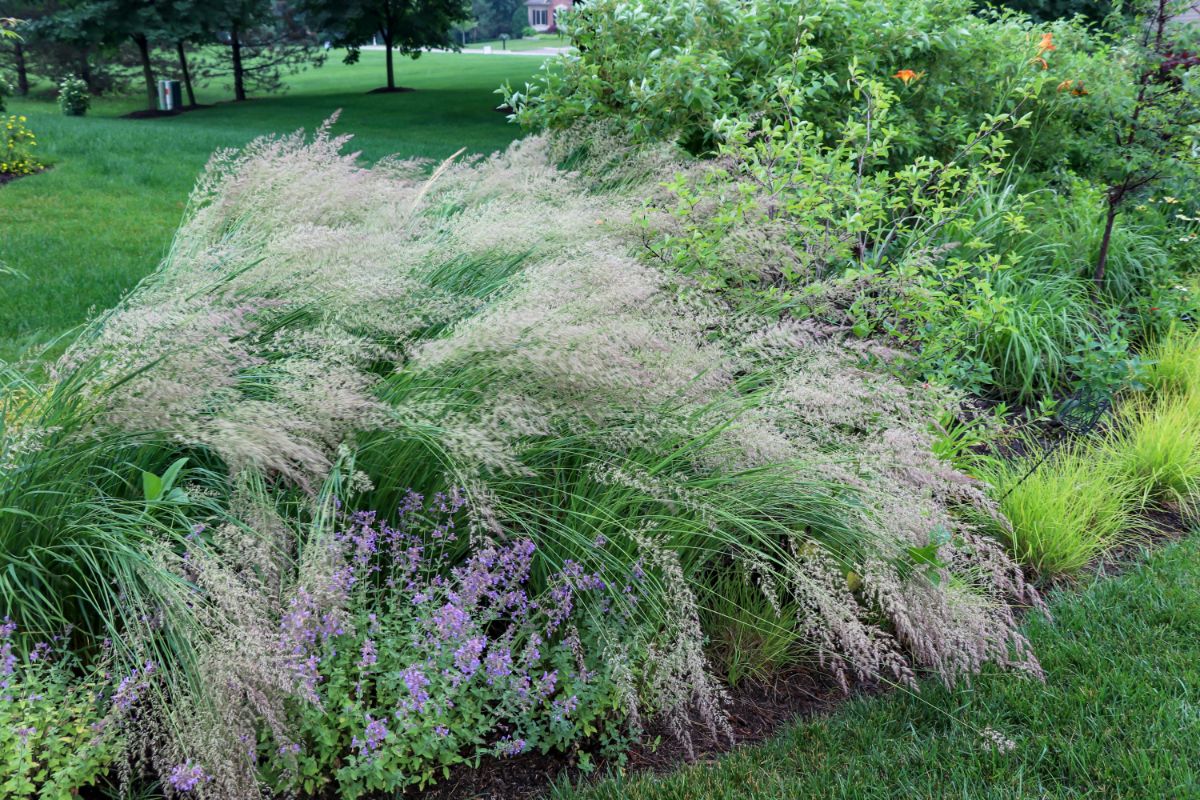
Perennial ornamental grasses differ in their nature of growth. The more dwarfed clumping, mounding plants can reach only 1 foot tall and wide. On the other hand, the more towering, spreading varieties can get over 7 feet tall and wide by underground rhizomes.
However, most perennial ornamental grasses generally grow within the range of 1 to 6 feet tall and 1 to 3 feet wide.
Staking Tips
If your ornamental grass is planted in full sun without excessive nitrogen fertilizer, it should be strong enough to stand tall on its own. However, more giant varieties featuring flower heads buried in partial shade will probably grow weaker stalks so that they can fall over in the wind.
Again, applying excessive nitrogen fertilizer to your ornamental grasses will cause them to grow tall, weak stems. Hence, you must stake them during the summer to enable them to gain support whenever they produce large flower heads in the fall.
Watering Tips
Perennial ornamental grasses are significantly resistant to drought, especially immediately after they become established. However, you can water them regularly during their tender period and transplanting time until they become established.
Again, make sure you grow suitable perennial ornamental grass for your region, as those that need to be watered frequently may not be ideal choices for drier parts of the country or world.
Fertilizing Tips
Apart from mixing in some compost during planting and applying an annual 1 to 2-inch-thick layer of compost every spring, perennial ornamental grasses do not need additional feeding.
If you are planting them on poor soils, you must add little organic 5-5-5 fertilizer during the spring season.
Trimming & Pruning
One of the most attractive features of perennial ornamental grasses is their fall flower heads that will extend deep into spring. Do not cut the flower heads in winter or cut only a few to take them indoors and add to your flower settings.
Note: Cutting back your ornamental grasses is primarily based on whether they are cool or warm climate grasses.
Cut back frost season grasses like Fescue, Ribbon Grass, Feather Grass and Northern Sea Oats would be best before it experiences new growths. You can cut back at around ⅓ of the previous growth remains.
On the other hand, for warm weather grasses like Japanese Blood Grass, Maiden Grass, and Fountain Grass, it is best to cut them back in fall if you want to avoid grass heads or mid-spring before it experiences new growth. Meanwhile, trim them to the ground using a hedge trimmer or hand pruner.
Some perennial ornamental grass varieties like Miscanthus grass possess sharp grass blades, so a glove is necessary. Before pruning, tie a rope or Velcro tie around the grass bundle and trim under the wrap to make gathering the grasses and moving the compost pile easier.
Mulching Tips
Mulching your Perennial ornamental grasses is essential in spring. You can add about a 2 to 3-inch layer of bark mulch to help keep the soil moist and deter weeds from growing between the grasses.
Dividing & Transplanting
It would be best to divide your perennial ornamental grass at least once every few years, as it can grow too vast for an area.
By dividing it, you spread your favorite ornamental grass all over your garden or share it with other gardeners or friends. Again, if you discover some clumping types dying out in the middle, you know it requires division.
If you want to divide your frost weather ornamental grass in spring before it experiences new growth and once you have finished pruning the grass, then you have to;
· Dig up the clump
· Trim the clump into different parts using a sharp spade or serrated garden knife
· Replant in the same area as the parent grass, applying compost to the hole and water properly
· Divide warm-season perennial ornamental grasses using a similar method from mid-spring to early summer.
Pest & Diseases
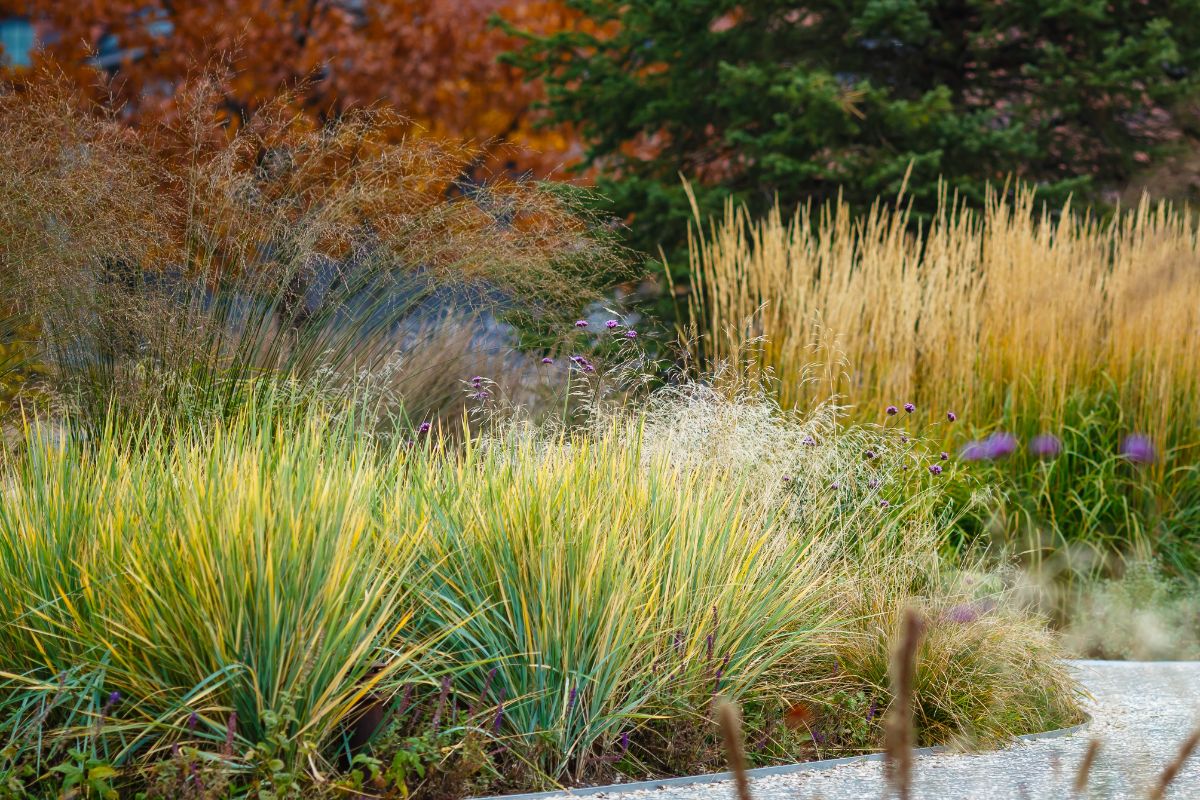
Almost all perennial ornamental grasses are low maintenance and pest free. However, you may sometimes find aphids and spider mites on the foliage of tender plants and new growth. So, it's essential to kill them using sprays of insecticidal soap.
Perennial ornamental grasses can sometimes be infected by diseases like rust and powdery mildew, especially in wetter zones. So, it would help if you space plants further apart and tidy up the dead foliage properly in winter or early spring to eliminate any fungal spores in that area.
While most perennial ornamental grasses are deer-resistant, they might still develop an interest at any time, especially for those with tender leaves.
You can fend them off using repellent sprays that contain garlic, cayenne, rotten eggs, or slaughterhouse waste, which you have to rotate on the foliage. However, the best defensive approach remains a 7-foot-tall tall fence around your garden.
Frequently Asked Questions
What is the easiest perennial ornamental grass to grow?
Perennial ornamental grasses are easy to grow and maintain, but one of the easiest, if not the easiest, is Pink muhly grass. This tall plant can reach up to 3 feet in height and provide a stunning display, especially near the end of summer. As the season ends, the deep green leaves start to grow soft pink blooms that give off a fuzzy look.
What is the tallest growing ornamental grass?
Some perennial ornamental grasses have towering nature, but one of the tallest, if not the tallest, is Ravenna grass (often referred to as 'Pampas grass' even though it's technically a different variety). It produces plumes that can sometimes reach about 10 feet in the garden.
What is the shortest ornamental grass?
As long as Dwarf Mondo Grass (Ophiopogon spp.) is concerned, about few or no plant is shorter than its 4 to 6-inch (10-15 cm.) height. It is a bright green variety that produces blue blooms in the summer. Dwarf mondo grass thrives in full sun or partially shaded areas.
What is the hardiest ornamental grass?
Most perennial ornamental grasses are hardy plants, but the hardiest of all is Pampas Grass (Cortaderia selloana). This variety grows rapidly and up to 8 feet tall; meanwhile, it thrives in partial shade, requires well-drained soil, and is hardy to +10 degrees F in zones 7 to 10.
What happens if you don't trim ornamental grass?
As we stated earlier in this article, it is imperative to trim back perennial ornamental grasses if you want them to continue to look tidy and encourage new growth. Failure to trim back will cause the green to start growing through the brown, which is not a good omen.
Subsequently, it is an issue because the brown will begin to produce seeds. Once the grass starts creating seeds, there is an excellent chance that the grass will die out. So, it would be best to avoid this problem beforehand by ensuring you trim your plants adequately and at the right time.
Conclusion
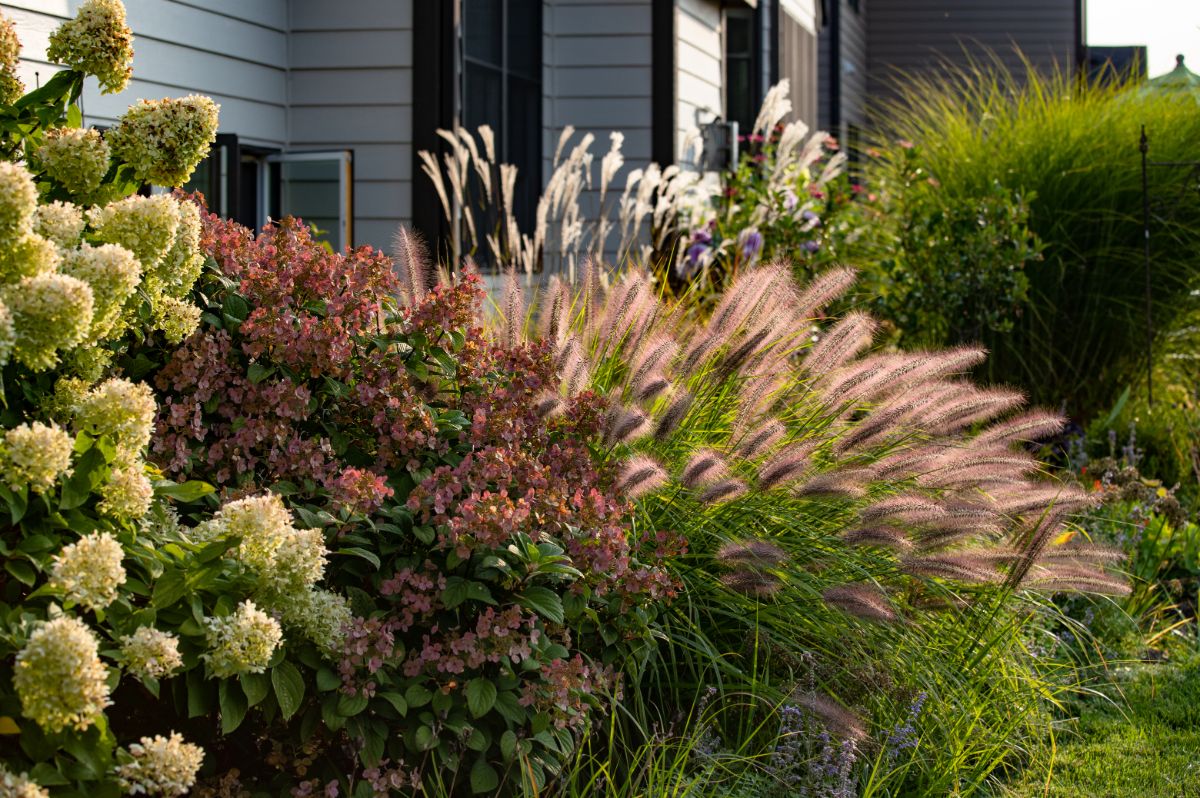
Once you are prepared to plant your perennial ornamental grass, you must dig a hole two or three times more comprehensively than the pot and gradually put the plant into the hole.
Then rough up all parts of the root ball using your gloved hand if the roots are winding about in the pot. After that, fill back the soil, solidly pat them down, and water thoroughly.
The next phase is to water the plants while they are growing and during dry periods, making sure you plan on how to cut them back in early spring.
Meanwhile, you must note the planting time and region of perennial ornamental grasses, as they are crucial for their survival and healthy appearance.


